14.1: The Nature of Religion
14.1.1: The Nature of Religion
Religion is a collection of cultural systems, belief systems, and worldviews that relate humanity to spirituality and to moral values.
Learning Objective
Define religion and its essential features
Key Points
- The sociologist Emile Durkheim defined religion as a “unified system of beliefs and practices relative to sacred things. ” By sacred things he meant things “set apart and forbidden — beliefs and practices which unite into one single moral community called a Church, all those who adhere to them”.
- The development of religion has taken different forms in different cultures. Some religions emphasize belief while others emphasize practice. Some religions focus on subjective experience of the religious individual while others consider activities of the religious community to be most important.
- Social constructionism says that religion is a modern concept that suggests all spiritual practice and worship follows a model similar to the Abrahamic religions and thus religion, as a concept, has been applied inappropriately to non-Western cultures.
Key Terms
- sacred
-
Set apart by solemn religious ceremony; especially, in a good sense, made holy; set apart to religious use; consecrated; not profane or common; as, a sacred place; a sacred day; sacred service
- belief system
-
The basis of a set of beliefs
- hierarchy
-
Any group of objects ranked so that everyone but the topmost is subordinate to a specified group above it.
Example
- Religious services can bring the community together. Sociolgists can imply that religious rituals can spark social interactions among community members.
Religion is a collection of cultural systems, belief systems, and worldviews that relate humanity to spirituality and, sometimes, to moral values. Many religions have narratives, symbols, traditions, and sacred histories that are intended to give meaning to life or to explain the origin of life or the universe.
Many languages have words that can be translated as “religion,” but they may use them in a very different way, and some have no word for religion at all. For example, the Sanskrit word “dharma,” sometimes translated as “religion,” also means law. Throughout classical South Asia, the study of law consisted of concepts such as penance through piety and ceremonial and practical traditions. Medieval Japan at first had a similar union between “imperial law” and universal or “Buddha law,” but these later became independent sources of power.
The typical dictionary definition of religion refers to a “belief in, or the worship of, a god or gods” or the “service and worship of God or the supernatural. ” However, many writers and scholars have noted that this basic “belief in god” definition fails to capture the diversity of religious thought and experience. Edward Burnett Tylor defined religion as simply “the belief in spiritual beings. ” He argued, in 1871, that narrowing the definition to mean the belief in a supreme deity or judgment after death would exclude many peoples from the category of religious and thus “has the fault of identifying religion rather with particular developments than with the deeper motive which underlies them. ” He also argued that the belief in spiritual beings exists in all known societies.
The sociologist Emile Durkheim, in his seminal book The Elementary Forms of the Religious Life, defined religion as a “unified system of beliefs and practices relative to sacred things. ” By sacred things he meant things “set apart and forbidden — beliefs and practices which unite into one single moral community called a Church, all those who adhere to them. ” Sacred things are not, however, limited to gods or spirits. On the contrary, a sacred thing can be “a rock, a tree, a spring, a pebble, a piece of wood, a house, in a word, anything can be sacred. ” Religious beliefs, myths, dogmas, and legends are the representations that express the nature of these sacred things and the virtues and powers that are attributed to them.
The development of religion has taken different forms in different cultures. Some religions place an emphasis on belief while others emphasize practice. Some religions focus on the subjective experience of the religious individual while others consider the activities of the religious community to be most important. Some religions claim to be universal, believing their laws and cosmology to be binding for everyone, while others are intended to be practiced only by a closely-defined or localized group. In many places religion has been associated with public institutions such as education, hospitals, the family, government, and political hierarchy.
One modern academic theory of religion, social constructionism, says that religion is a modern concept that has been defined relative to the Abrahamic religions and that thus, religion as a concept has been applied inappropriately to non-Western cultures that are not based upon such systems.

Sacred Buddhist Ritual in Nepal
His Holiness Jigdal Dagchen Sakya leading the empowerment into practice at Tharlam Monastery, Boudha, Kathmandu, Nepal.
14.1.2: The Elements of Religion
A conventional social scientific view understands religion as a group’s collective beliefs and rituals relating to the supernatural.
Learning Objective
Identify the different elements that comprise religion
Key Points
- Sacred refers to collective interests within different religious practices. Profane acts include individual concerns that are not part of religious rituals.
- Emile Durkheim argues that religion is composed of the sacred elements of social life. However, many see this definition as too broad, since there are many collective interests that most do not consider religious.
- Ritual is an everyday practice that resembles symbolic meaning in different religions.
- Other social scientists view religion as any attempt to answer existential questions. Many also consider this too broad a definition.
- A third social scientific perspective views religion as the collective beliefs and rituals of a group relating to the supernatural. Though not without criticisms, this categorization most closely adheres to the traditional and popular view of what constitutes a religion.
Key Terms
- sacred
-
Set apart by solemn religious ceremony; especially, in a good sense, made holy; set apart to religious use; consecrated; not profane or common; as, a sacred place; a sacred day; sacred service
- profane
-
Not sacred or holy, unconsecrated; relating to non-religious matters, secular.
- supernatural
-
Above nature; that which is beyond or added to nature, often so considered because it is given by God or some force beyond that which humans are born with. In Roman Catholic theology, sanctifying grace is considered to be a supernatural addition to human nature.
Example
- The Torah and Bible are considered holy books and are treated with reverence and respect and are considered sacred books in their religions.
Emile Durkheim argues that religion is comprised of the sacred elements of social life. Durkheim also identifies collective interests and group unity as part of the sacred, whereas individual concerns fall into the profane category. This distinction makes sense when we think about western religious traditions where, for example, the Torah and Bible are considered holy books treated with reverence and respect. Problems quickly emerge, however, when we think about nationalism or consumerism. Under Durkheim’s distinction, both nationalism and consumerism would be considered sacred practices.
The reverence afforded to the U.S. constitution, cars, shoes and former presidents clearly constitutes the sacred and thus religious, though the vast majority of U.S. religious practitioners would disagree that they are members of multiple faith traditions. As a result, some have argued Durkheim’s distinction is not sufficiently narrow to capture the essence of religion. If we want to examine the difference between collective and individual interests, Durkheim’s distinction steers us in the right direction .

Religious Symbols
Symbols for Major Religions of the World
Other social scientists view religion as any attempt to answer existential questions, i.e. “is there life after death” and “how does the universe work and what’s my role in it.” This categorization of religion highlights its functional role as serving specific social ends. In doing so, however, this perspective also attracts criticisms for being overly encompassing. Many branches of scientific investigation, for instance, would be considered religious, and even atheism would fit into the frame of attempting to answer existential questions.
A third social scientific perspective views religion as the collective beliefs and rituals of a group relating to the supernatural. If we simply focus on beliefs relating to the supernatural, this too may be broad enough to include atheism. However, when belief and rituals of a group relating to the supernatural are coupled together, the scope seems appropriately narrowed. Though not without criticisms, this categorization most closely adheres to the traditional and popular view of what constitutes a religion .

Islamic Text
BookTauzeeh ul Masail
14.2: Types of Religions
14.2.1: Magic and Supernaturalism
Supernaturalism refers to any belief system with supernatural forces, such as magic, and, in general, is prevalent in all societies.
Learning Objective
Give examples which help distinguish between the very similar concepts of religion and magic
Key Points
- Supernatural forces are not bound to laws of nature; they work outside of them.
- Mana is a classic example of a supernatural force that imbues objects with powers of authority.
- The term religion is reserved for an organized cult with a priesthood and dedicated sites of worship or sacrifice, while magic is prevalent in all societies, regardless of whether they have organized religion or more general systems of animism or shamanism.
Key Terms
- supernaturalism
-
A belief in the doctrine of supernatural or divine agency as manifested in the world, in human events, religious revelation, miracles, etc.
- Supernatural Forces
-
The supernatural is that which is not subject to the laws of nature, or more figuratively, that which is said to exist above and beyond nature.
- mana
-
A form of supernatural energy in Polynesian religion that inheres in things or people.
Example
- In Polynesian cultures, mana is the force that allows efficacy, or the ability to have an influence in the world. Similarly for Melanesians, mana primarily inhabits objects, like charms or amulets, which confer good fortune to whoever posseses them.
Supernaturalism
Supernaturalism is perhaps the broadest classification of religious practices, encompassing any belief system dealing with supernatural forces. Supernaturalism asserts the existence of forces beyond human comprehension that frequently interfere, for better or worse, in human affairs. Most simply, the laws of nature do not bind the supernatural. These forces are considered impersonal because they are thought to come and go as they see fit, and can inhabit human and non-human objects alike. In popular culture and fiction, the supernatural is whimsically associated with the paranormal and the occult, which differs from traditional concepts in some religions, such as Catholicism, where divine miracles are considered supernatural.
The concept ‘mana’ is a classic example of a supernatural force that imbues objects with powers and authority. For example, in Polynesian cultures, mana is the force that allows efficacy, or the ability to have an influence in the world. Similarly for Melanesians, mana primarily inhabits objects, like charms or amulets, which confer good fortune to whoever possesses them (though mana can also inhabit people or animals). Mana is not inherently good or evil; its impact depends on how it is used.
Magic
In many cases, it becomes difficult or impossible to draw any meaningful line between beliefs and practices that are magical versus those that are religious. In general, The term religion is reserved for an organized cult with a priesthood and dedicated sites of worship or sacrifice, while magic is prevalent in all societies, regardless of whether they have organized religion or more general systems of animism or shamanism. Religion and magic became conceptually separated with the development of western monotheism, where the distinction arose between supernatural events sanctioned by mainstream religious doctrine (“miracles”) and mere magic rooted in folk belief or occult speculation. In pre-monotheistic religious traditions, there is no fundamental distinction between religious practice and magic; tutelary deities concerned with magic are sometimes called “hermetic deities” or “spirit guides. “

Woman floating above bed
Supernatural force allows this woman to float.
14.2.2: Animism
Animism is the belief that non-human entities are spiritual beings, either intrinsically or because spirits inhabit them.
Learning Objective
Identify some of the key elements of animism and at least one real life instantiation
Key Points
- Pantheism is the belief that everything shares the same spiritual essence—individuals do not have distinct spirits or souls. Animism puts more emphasis on the uniqueness of each individual soul.
- In animist societies, ritual is considered essential to win the favor of the spirits that ward off other malevolent spirits and provide food, shelter, and fertility.
- Shamans, also sometimes called medicine men or women, serve as mediums between the physical world and the world of spirits.
Key Terms
- shaman
-
A member of certain tribal societies who acts as a religious medium between the concrete and spirit worlds.
- animism
-
A belief that spirits inhabit some or all classes of natural objects or phenomena.
- spirits
-
The undying essence of a human. The soul.
Example
- Shinto, the traditional religion of Japan, is highly animistic. In Shinto, spirits of nature, or kami, are believed to exist everywhere. These range from the major (such as the goddess of the sun), which can be considered polytheistic, to the minor, which are more likely to be seen as a form of animism.
Animism refers to the belief that non-human entities are spiritual beings, either intrinsically or because spirits inhabit them for a period of time. Unlike supernatural forces, animist spirits may be inherently good or evil. Often, these spirits are thought to be the souls of deceased relatives, and they are not worshiped as deities.
While animists believe everything to be spiritual in nature, they do not necessarily see the spiritual nature of everything in existence as being united (monism), the way pantheists do. Animism puts more emphasis on the uniqueness of each individual soul. In pantheism, everything shares the same spiritual essence—there are no distinct spirits and/or souls. Because humans are considered a part of nature, rather than superior to, or separate from it, animists see themselves on roughly equal footing with other animals, plants, and natural forces, and subsequently have a moral imperative to treat these agents with respect.
In animist societies, ritual is considered essential to win the favor of the spirits that ward off other malevolent spirits and provide food, shelter, and fertility. Shamans, also sometimes called medicine men or women, serve as mediums between the physical world and the world of spirits.
Animism is thought to be the belief system that laid the groundwork for the notion of a soul and the animation of traditionally inanimate objects, allowing every world religion to take those basic principles in other directions. Though earlier philosophers such as Aristotle and Thomas Aquinas discussed animism, the formal definition was postulated by Sir Edward Taylor late in the 19th century. Examples of Animism can be seen in forms of Shinto, Hinduism, Buddhism, pantheism, Paganism, and Neopaganism.

Shinto Shrine
Shinto is an animistic religion in Japan.
14.2.3: Theism and Monotheism
Theism refers to any belief system that incorporates a deity.
Learning Objective
Create a short sketch in which a monotheist, a deist, a polytheist, and Emile Durkheim enter into a debate about their views on god(s)
Key Points
- Since theism is so common throughout human history, Emile Durkheim saw deities as an extension of human social life.
- Monotheistic traditions conceive of God as omniscient, omnipotent, omnipresent and active in the governance and organization of the world and universe. Judaism, Christianity and Islam are monotheistic.
- Deism holds that religious beliefs must be founded on human reason and observed features of the natural world, and that these sources reveal the existence of a supreme being as creator.
- Polytheism is the belief that multiple gods exist. Hard polytheism recognizes multiple gods as being distinct and separate beings, while soft polytheism views multiple gods as being connected under the umbrella of a greater whole.
- Panentheism is the belief that the universe is a part of a deity, but that the deity is greater than the universe.
- Polytheism is the belief that multiple gods exist, but do not intervene with the universe.
- Monolatrism refers to the belief that there may be more than one deity, but that only one is worthy of being worshiped.
Key Terms
- deity
-
A preternatural or supernatural human or non-human being or entity, or an object that possesses miraculous or supernatural attributes, powers or superpowers (e.g. a god or goddess).
- monotheism
-
The belief in a single god; especially within an organized religion.
- polytheism
-
The belief of the existence of many gods.
Example
- Christian, Islamic and Jewish religions are theisms that comprise the monotheistic tradition that believes that there is only one God in all creation.
The term theism, first introduced by Ralph Cudworth (1617-1688), derives from the Greek word theos meaning “god”. It refers to any belief system that incorporates the existence of a deity. A deity is a supernatural being thought of as holy, divine or sacred. Though they take a variety of forms, deities are often expressed as taking human form. They are usually immortal, and are commonly assumed to have personalities, consciousness and intellects comparable (albeit superior) to those of humans. Typically, deities do not reveal themselves directly to humans, but make themselves known through their effects in the world. They are thought to dwell mainly in otherworldly or holy places like Heaven, Hell, the sky, the under-world, or in a supernatural plane or celestial sphere.
Due to the ubiquity of theistic traditions, Emilee Durkheim saw the deities as an extension of human social life. In line with this reasoning, psychologist Matt Rossini contends that when humans began living in larger groups, they may have created gods as a means of enforcing morality. In small groups, morality can be enforced by social forces like gossip or reputation. However, it is much harder to enforce morality using social forces in larger groups. He indicates that by including ever watchful gods and spirits, humans discovered an effective strategy for restraining selfishness and building more cooperative groups.
When only one deity is recognized, the faith tradition is called monotheistic. Typically, monotheistic traditions conceive of God as omniscient, omnipotent, omnipresent and active in governance and organization of the world and the universe. The most prominent modern day monotheistic religions include Christianity, Islam and Judaism.
In contrast to monotheism, deism is the belief that at least one deity exists and created the world, but that the creator(s), though transcendent and supreme, does/do not alter the original plan for the universe. Deism typically rejects supernatural events (prophecies, miracles and divine revelations) prominent in organized religion. Instead, deism holds that religious beliefs must be founded on human reason and observed features of the natural world, and that these sources reveal the existence of a supreme being as creator.
Faith traditions involving more than one deity are called polytheistic. Hard polytheism recognizes multiple gods as being distinct and separate beings. Examples include the Egyptian and Greek religions, as well as certain schools of Hinduism. Soft polytheism views multiple gods as being connected under the umbrella of a greater whole. Some forms of Hinduism like Smartism/Advaita Vedanta are considered soft polytheistic traditions. Polytheism can also be subdivided according to how individual deities are regarded: Henotheism is the belief that while only one deity is worshiped other deities may exist and other people are justified in worshiping those other deities. Monolatrism refers to the belief that there may be more than one deity, but that only one is worthy of being worshiped .
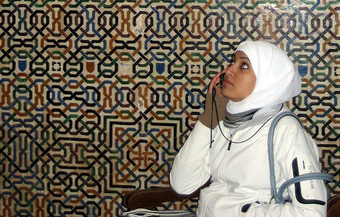
Muslim woman in tradition attire
Muslim Culture
14.2.4: The Sacred and the Profane
Emile Durkheim posited the sacred–profane dichotomy as central to all religion, but critics suggest this theory is too eurocentric.
Learning Objective
Analyze the role of the sacred–profane dichotomy in religion
Key Points
- The sacred–profane dichotomy is an idea posited by French sociologist Émile Durkheim.
- Durkheim considered the sacred–profane dichotomy to be the central characteristic of religion.
- The sacred represented the interests of the group, especially unity.
- Sacred group symbols are called totems.
- The profane involves mundane individual concerns.
- According to Durkheim, sacred/profane is not equivalent to good/evil; the sacred could be good or evil, and the profane could be either as well.
- Durkheim’s claim of the universality of the sacred–profane dichotomy has come under criticism as too centered on European thought.
Key Term
- profane
-
Not sacred or holy, unconsecrated; relating to non-religious matters, secular.
The sacred–profane dichotomy is an idea posited by French sociologist Émile Durkheim, who considered it to be the central characteristic of religion: “religion is a unified system of beliefs and practices relative to sacred things, that is to say, things set apart and forbidden.” In Durkheim’s theory, the sacred represented the interests of the group, especially unity, which were embodied in sacred group symbols, or totems. The profane, on the other hand, involved mundane individual concerns. Durkheim explicitly stated that the sacred/profane dichotomy was not equivalent to good/evil. The sacred could be good or evil, and the profane could be either as well.
Durkheim’s claim of the universality of this dichotomy for all religions/cults has been criticized by scholars such as British anthropologist Jack Goody. Goody also noted that “many societies have no words that translate as sacred or profane and that ultimately, just like the distinction between natural and supernatural, it was very much a product of European religious thought rather than a universally applicable criterion.”
14.3: The Functionalist Perspective on Religion
14.3.1: Functions of Religion
The functionalist perspective, which originates from Emile Durkheim’s work on religion, highlights the social role of religion.
Learning Objective
Explain how functionalists view the purpose of religion in society
Key Points
- The positivist tradition encourages the study of society using dispassionate and scientific methods.
- Emile Durkheim argued that religion provides social cohesion and social control to maintain society in social solidarity.
- Collective consciousness, which is the fusion of all of our individual consciousnesses, creates a reality of its own.
- Critics of the functionalist approach point out that religion can be dysfunctional. For example, religion may incite violence by a fundamentalist religious group.
Key Terms
- social control
-
any control, either formal or informal, that is exerted by a group, especially by one’s peers
- social cohesion
-
The bonds or “glue” that maintain stability in society.
Example
- Durkheim noted that religion provides a worldview for complex modern societies in order to maintain social order and solidarity.
Functions of Religion
The structural-functional approach to religion has its roots in Emile Durkheim’s work on religion. Durkheim argued that religion is, in a sense, the celebration and even (self-) worship of human society. Given this approach, Durkheim proposed that religion has three major functions in society: it provides social cohesion to help maintain social solidarity through shared rituals and beliefs, social control to enforce religious-based morals and norms to help maintain conformity and control in society, and it offers meaning and purpose to answer any existential questions. Further, Durkheim placed himself in the positivist tradition, meaning that he thought of his study of society as dispassionate and scientific. He was deeply interested in the problem of what held complex modern societies together. Religion, he argued, was an expression of social cohesion.
Religion, for Durkheim, is not imaginary, although he does deprive it of what many believers find essential. Religion is very real; it is an expression of society itself, and indeed, there is no society that does not have religion. We perceive as individuals a force greater than ourselves and give that perception a supernatural face. We then express ourselves religiously in groups, which for Durkheim makes the symbolic power greater. Religion is an expression of our collective consciousness, which is the fusion of all of our individual consciousness, which then creates a reality of its own.
It follows, then, that less complex societies, such as the Australian Aborigines, have less complex religious systems, involving totems associated with particular clans. The more complex a particular society is, the more complex the religious system. As societies come in contact with other societies, there is a tendency for religious systems to emphasize universalism to a greater and greater extent. However, as the division of labor makes the individual seem more important, religious systems increasingly focus on individual salvation and conscience.
The primary criticism of the structural-functional approach to religion is that it overlooks religion’s dysfunctions. For instance, religion can be used to justify terrorism and violence. Religion has often been the justification of, and motivation for, war. In one sense, this still fits the structural-functional approach as it provides social cohesion among the members of one party in a conflict. For instance, the social cohesion among the members of a terrorist group is high, but in a broader sense, religion is obviously resulting in conflict without questioning its actions against other members of society.
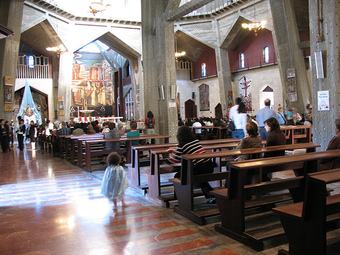
Catholic Church Gathering for Mass
Congregation Gathering Service for the Virgin Mary
14.3.2: Religion and Social Support
According to many social science studies, psychological well-being is positively correlated with religious engagement.
Learning Objective
Discuss the relationship between religion and social and individual well-being
Key Points
- Many studies suggest that religious people are happier and less stressed than their non-religious counterparts.
- The Legatum Prosperity Index reflects the research that there is a positive link between religious engagement and well-being.
- Religiosity has a salutary relationship with psychological adjustment, because it is related to less psychological distress, more life satisfaction, and better self-actualization.
Key Terms
- religiosity
-
An index of how strongly religious a person is
- self-actualization
-
Self-actualization is a term that has been used in various psychology theories, often in slightly different ways. The term was originally introduced by the organismic theorist Kurt Goldstein for the motive to realize one’s full potential. However, the concept was brought most fully to prominence in Abraham Maslow’s hierarchy of needs theory, in which “self-actualization” was the final level of psychological development that can be achieved when all basic and mental needs are fulfilled. In such a case, the “actualization” of full personal potential takes place.
- well-being
-
a state of health, happiness and/or prosperity
Example
- Surveys by Gallup, the National Opinion Research Center, and the Pew Organization conclude that spiritually committed people are twice as likely to report being “very happy” than the least religiously committed people. Therefore, some social scientists argue that religion provides a method for social support that leads to happiness.
Religion and Health
There is now extensive research suggesting that religious people are happier and less stressed than their non-religious counterparts. Social scientists have identified a number of mechanisms that might explain why religion might make an individual happier, none of which rest on the explanation of divine intervention or supernatural phenomenon. Certain features of religious practice may facilitate greater well-being for members. These include the following:
- basic social contact
- a large, non-family network of social support
- the positive mental health one derived from optimism and volunteering,
- coping strategies to enhance one’s ability to deal with stress
- a worldview that prevents existential questions from arising
Scientific Studies of Religion and Health
The Legatum Prosperity Index reflects the research that suggests that there is a positive link between religious engagement and well-being. People who report that God is very important in their lives are on average more satisfied with their lives, after accounting for their income, age and other individual characteristics that might bias results. A 1993 study by Kosmin & Lachman indicated that people without a religious affiliation appeared to be at greater risk for depressive symptoms than individuals affiliated with a religion. Surveys by Gallup, the National Opinion Research Center and the Pew Organization conclude that spiritually committed people are twice as likely to report being “very happy” than the least religiously committed people. An analysis of over 200 studies contends that high religiousness predicts a lower risk of depression, a lower risk of drug abuse, fewer suicide attempts. Those same studies associate religious involvement with reports of higher satisfaction with sex life and a sense of well-being. A review of 498 peer-review academic studies revealed that a large majority of them showed a positive correlation between religious commitment and higher levels of perceived well-being of self-esteem. These same studies revealed a positive correlation between religious involvement and lower levels of hypertension, depression, and clinical delinquency. A meta-analysis of 34 recent studies published between 1990 and 2001 found that religiosity has a salutary relationship with psychological adjustment. Religious involvement was related to less psychological distress, more life satisfaction, and better self-actualization. Finally, as signaled in a recent review of 850 research papers, the majority of well-conducted studies suggest that higher levels of religious involvement are positively associated with indicators of psychological well-being (life satisfaction, happiness, positive affect, and higher morale). In these studies, religious involvement was associated with less depression, fewer suicidal thoughts, and less drug alcohol abuse.
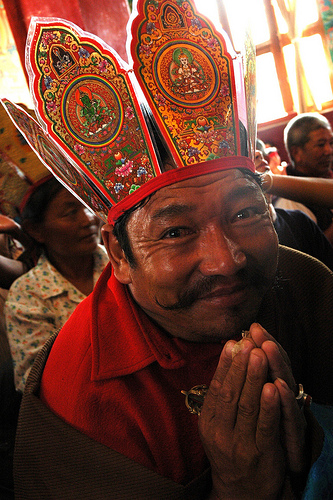
Tharlam Monastery of Tibetan Buddhism
An apparently happy man wears the 5 Dhyani Buddhas Crown and holds a Flower and Dorje (vajra).
14.4: The Conflict Perspective on Religion
14.4.1: Marx and the “Opiate of the Masses”
Karl Marx argues that religion works to calm uncertainty over our role in the universe and in society, and to maintain the status quo.
Learning Objective
Give an example which either supports or contradicts Marx’s idea that ”religion is the opium of the people”
Key Points
- One of the most frequently paraphrased statements of Karl Marx is, religion is the opium of the people.
- Karl Marx argues that religion plays a significant role in maintaining the status quo by promising rewards in the after-life rather than in this life.
- Social inequalities result from the differences inherent in class structures, such as the inequality between the proletariat and the bourgeoisie.
Key Terms
- proletariat
-
the working class or lower class
- status quo
-
the current state of things; the way things are, as opposed to the way they could be; the existing state of affairs.
- bourgeoisie
-
The capitalist class.
Example
- Marx’s view of capitalism saw rich capitalists getting richer and their workers getting poorer. Not only were workers being exploited, but in the process they were being further detached from the products they helped create. From this objectification comes alienation. The common worker is led to believe that he or she is a replaceable tool, and is alienated to the point of extreme discontent. Here, in Marx’s eyes, religion enters. Capitalism utilizes our tendency towards religion as a tool or ideological state apparatus to justify this alienation.
One of the most frequently paraphrased statements of Karl Marx is, religion is the opium of the people. It was translated from the German original, “Die Religion … ist das Opium des Volkes,” and is often referred to as “religion is the opiate of the masses. ” Taken in context, Marx is arguing that religion was constructed by people to calm uncertainty over our role in the universe and in society .

Religion as opium of the people
Abolition of Religion as the Illusory Happiness of the People.
Early social theorists offered explanations and analysis of religion in terms of the function of religion in society, the role of religion in the life of the individual, and the nature (and origin) of religion. With ‘the social-conflict approach,’ Karl Marx argues that religion plays a significant role in maintaining the status quo. Marx argues that religion accomplishes this by promising rewards in the after-life rather than in this life. By focusing attention on otherworldly rewards, religion pacifies members by providing a worldview that deflects attention that would otherwise be directed at the inequalities of this world.
Marx’s approach to sociology was critical in the sense that, in contrast to the knowledge for knowledge’s sake approach, it advocated change. Criticism of the system in place when he was writing was inherent in Marx’s approach; because of this, he took a particular stand on the existence of religion, namely, that it should be done away with. His efforts were, in his mind, based solely on what can be called applied science. Marx saw himself as doing sociology and economic theory for the sake of human development. As Christiano states, “Marx did not believe in science for science’s sake…he believed that he was also advancing a theory that would be a useful tool in effecting a revolutionary upheaval of the capitalist system in favor of socialism” (2008, 124). As such, the crux of his arguments was that humans are best guided by reason. Religion, Marx held, was a significant hindrance to reason, inherently masking the truth and misguiding followers. Marx viewed social alienation as the heart of social inequality . The antithesis to this alienation is freedom. Thus, to propagate freedom means to present individuals with the truth and give them a choice to accept or deny it. In this, “Marx never suggested that religion ought to be prohibited” (Christiano 2008, 126).
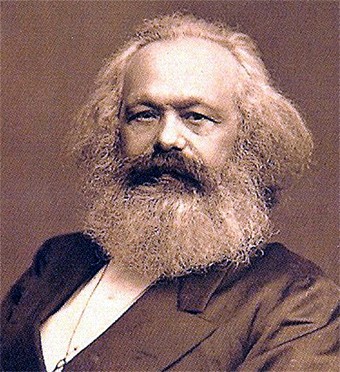
Karl Marx
Religion, Marx held, was a significant hindrance to reason, inherently masking the truth and misguiding followers.
14.4.2: Religion and Social Control
Marx viewed religion as a tool of social control used by the bourgeoisie to keep the proletariat content with an unequal status quo.
Learning Objective
Evaluate Karl Marx’s critical approach to religion
Key Points
- The social-conflict approach to religion highlights how religion, as a phenomenon of human behavior, maintains social inequality by advancing a worldview that justifies oppression.
- Karl Marx’s critical approach demanded that action be taken to resolve social inequalities. This was in stark contrast to his scholarly peers, many of whom pursued scholarship for the sake of knowledge, and did not attach to these academic projects overt political goals.
- Karl Marx viewed religion as a social control used to maintain the status quo in a given society.
Key Term
- status quo
-
the current state of things; the way things are, as opposed to the way they could be; the existing state of affairs.
Example
- Many types of people, whether they be Catholic, Muslim, or Jewish, are expected to follow their family’s religion as a social norm. From a Marxist perspective, these expectations become part of religion’s ability to control society and maintain the status quo.
Marxist Theory of Religion
The social-conflict approach is rooted in Karl Marx’s critique of capitalism. According to Marx, in a capitalist society, religion plays a critical role in maintaining an unequal status quo, in which certain groups of people have radically more resources and power than other groups of people. Marx argued that the bourgeoise used religion as a tool to keep the less powerful proletariat pacified. Marx argued that religion was able to do this by promising rewards in the after-life, instead of in this life. It was in this sense that Marx asserted the following. “Religion is the sigh of the oppressed creature, the feeling of a heartless world, and the soul of soulless circumstances. It is the opium of the people…The abolition of religion as the illusory happiness of the people is the demand for their real happiness” (p.72). In this passage, Marx is calling for the proletariat to discard religion and its deceit about other-worldly events. Only then would this class of people be able to rise up against the bourgeoisie and gain control of the means of production, and only then would they achieve real rewards, in this life. Thus, the social-conflict approach to religion highlights how religion, as a phenomenon of human behavior, functions to maintain social inequality by providing a worldview that justifies oppression.
It should be reiterated here that Marx’s approach to sociology was critical in the sense that it advocated for change in the world. This is in stark contrast to other scholars, many of whom pursue knowledge for knowledge’s sake, and lack overt political aims. Because Marx was committed to criticizing the prevailing organization of society during his time, he took a particularly aggressive stance towards religion. He believed that it was a tool of social control used to maintain an unequal status quo, and that it should be abolished.
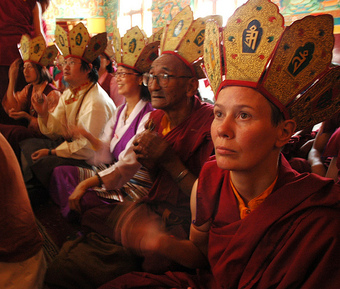
Religious Buddhist Gathering in Tibetan Monastery
Tharlam Monastery of Tibetan Buddhism
14.5: The Symbolic-Interactionist Perspective on Religion
14.5.1: Religious Symbols
Religious symbolism is the use of acts, artwork, and events to create a mythos expressing the teachings of the religion.
Learning Objective
Discuss the use of religious symbols as means of representing the ideals and values of a particular religion
Key Points
- Christianity has borrowed from the common stock of significant symbols known to most periods and to all regions of the world.
- Universalism refers to religious, theological and philosophical concepts with universal application or applicability.
- Comparative religion is the systematic comparison of the doctrines and practices of the world’s religions.
Key Terms
- comparative religion
-
Comparative religion compares the doctrines and practices of the worlds religions.
- Universalism
-
The theological belief that all souls can attain salvation.
Example
- The Star of David is a Jewish religious symbol that represents Judaism.
Religious symbolism is the use by a religion of symbols including archetypes, acts, artwork, events, or natural phenomena. Religions view religious texts, rituals and works of art as symbols of compelling ideas or ideals. Symbols help create a resonant mythos expressing the moral values of the society or the teachings of the religion, foster solidarity among adherents, and bring adherents closer to their object of worship.
The symbolism of the early Church was characterized as being understood by initiates only. After the legalization of Christianity in the 4th-century, more recognizable symbols were put in use. Christianity has borrowed from the common stock of significant symbols known to most periods and to all regions of the world.
The study of religious symbolism is either universalist, a component of comparative religion and mythology, or seen in a localized scope within the confines of a religion’s limits and boundaries. Universalism refers to religious, theological and philosophical concepts with universal application or applicability. Religion in this context is defined as a set of beliefs concerning the cause, nature and purpose of the universe. This is especially true when religion is considered the creation of a superhuman agency or agencies, usually involving devotional and ritual observances containing a moral code governing the conduct of human affairs.
Comparative religion concerns the systematic comparison of the world’s religions. There are many benefits to such a course of inquiry, but in general the comparative study of religion yields a deeper understanding of the fundamental philosophical concerns of religion, including ethics, metaphysics and the nature and form of salvation.
Religious symbolism is effective when it appeals to both the intellect and the emotions. The choice of suitable acts and objects is narrow enough that it would not be easy to avoid the appearance of an imitation of other traditions, even if there had been a deliberate attempt to invent an entirely new ritual.

Hindu Symbol
Aum Hindu symbol
14.5.2: Rituals
A ritual is a set of actions performed mainly for their symbolic value, that may be prescribed by the traditions of a community.
Learning Objective
Identify the types of and purposes of rituals in various contexts of society, such as religion or politics
Key Points
- The term ritual usually refers to actions which are stylized, while excluding actions which are arbitrarily chosen by the performers.
- In religion, a ritual can comprise the prescribed outward forms observation within a religion or religious denomination.
- The purposes of rituals are varied and may include fulfillment of religious obligations or ideals, satisfaction of spiritual or emotional needs of the practitioners, strengthening of social bonds, social and moral education, etc.
- The social function of rituals has often been exploited for political ends. Alongside the personal dimensions of worship and reverence, rituals can have a more basic social functions in expressing, fixing, and reinforcing the shared values and beliefs of a society.
- Many animal species use ritualized actions to court or to greet each other or to fight.
Key Terms
- social function
-
Rituals may serve a social function in that they express, fix, and reinforce the shared values and beliefs of a society.
- ritual
-
Rite; a repeated set of actions
Example
- Catholic Sunday mass is a type of religious ritual that represents the religious culture of Catholicism and enacts theological doctrinal beliefs.
Rituals
A ritual is a set of actions performed mainly for their symbolic value. It may be prescribed by the traditions of a community, including by a religious community. The term usually refers to actions which are stylized, and usually excludes actions which are arbitrarily chosen by the performers. The purposes of rituals are varied. Rituals can fulfill religious obligations or ideals, satisfy spiritual or emotional needs of the practitioners, strengthen of social bonds, provide social and moral education, demonstrate of respect or submission, allow one to state one’s affiliation, obtain social acceptance or approval for some event—or rituals are sometimes performed just for the pleasure of the ritual itself.
Rituals of various kinds are a feature of almost all known human societies, past or present. They include not only the various worship rites and sacraments of organized religions and cults, but also the rites of passage of certain societies, atonement and purification rites, oaths of allegiance, dedication ceremonies, coronations and presidential inaugurations, marriages and funerals, school “rush” traditions and graduations, club meetings, sports events, Halloween parties, veterans parades, Christmas shopping and more.
In religion, a ritual can comprise the prescribed outward forms of observation within a religion or religious denomination. Although ritual is often used in conjunction with worship performed in a church, the actual relationship between any religion’s doctrine and its ritual(s) can vary considerably from organized religion to non-institutionalized spirituality.
Social Uses of Ritual
The social function of rituals has often been exploited for political ends. Alongside the personal dimensions of worship and reverence, rituals can have social functions that express, fix and reinforce the shared values and beliefs of a society. Rituals can help create a firm sense of group identity. Humans have used rituals to create social bonds and even to nourish interpersonal relationships. For example, nearly all fraternities and sororities have rituals incorporated into their structure, from elaborate and sometimes secret initiation rites, to the formalized structures used to convene a meeting. Thus, numerous aspects of ritual and ritualistic proceedings are ingrained into the workings of those societies.
Ritual actions are not only characteristic of human cultures; animal rituals exist as well. Many animal species use ritualized actions to court or to greet each other, or to fight. At least some ritualized actions have very strong selective purpose in animals. For example, ritualized fights often help avoid or limit strong physical violence between conflicting animals.

Devotees tie red crimson threads on making a wish fulfilled.
The temple dedicated to Mata Chintpurni Devi is located in District Una of Himachal Pradesh.
14.5.3: Beliefs
Religious belief is a strong belief in a supernatural power or powers that control human destiny.
Learning Objective
Examine the complexity of belief and the categories of belief within society
Key Points
- Religious adherents often distinguish religious belief from superstition. The term superstition refers to what are seen as excessive or false religious behaviors as opposed to proper or accepted religious standards.
- People with pluralist beliefs make no distinction between faith systems, viewing each one as valid within a particular culture.
- People with syncretistic views blend the views of a variety of different religions or traditional beliefs into a unique fusion which suits their particular experience and context.
- People with exclusivist beliefs typically explain other religions as either in error, or as corruptions or counterfeits of the true faith. In monotheistic faiths, references to God are used in constructs such as “God’s Chosen People”.
- People with inclusivist beliefs recognize some truth in all faith systems, highlighting agreements and minimizing differences, but see their own faith as in some way ultimate.
Key Terms
- pluralist beliefs
-
Religious pluralism is an attitude or policy regarding the diversity of religious belief systems co-existing in society.
- superstition
-
A belief, not based on human reason or scientific knowledge, that future events may be influenced by one’s behaviour in some magical or mystical way.
- supernatural power
-
The supernatural is that which is not subject to the laws of nature, or more figuratively, that which is said to exist above and beyond nature.
Example
- A hijab symbolizes a type of Islamic religious belief of a muslim woman in her faith.
Belief
Religious belief is a strong belief in a supernatural power or powers that control human destiny. Such a state may relate to the existence, characteristics, and worship of a deity or deities; divine intervention in the universe and human life; or values and practices centered on the teachings of a spiritual leader. In contrast to other belief systems, religious beliefs are usually codified.
Belief and Superstition: a Matter of Perspective
Religious adherents often distinguish their own religious beliefs from superstition. Both superstition and many traditional religions are non-materialistic, do not see the world as being subject to laws of cause and effect, and presume that there are immaterial forces influencing our lives. Both religion and superstition seek meaning in otherwise random and chaotic events. However, the term “superstition” refers to what the speaker sees as excessive or false religious behavior as opposed to belief or behavior within a proper or accepted religious standard.
Categories of Belief
People with pluralist beliefs make no distinction between faith systems, viewing each one as valid within a particular culture. People with syncretistic views blend the views of a variety of different religions or traditional beliefs into a unique fusion which suits their particular experience and context. Adherents of particular religions deal with the differing doctrines and practices espoused by other religions in a variety ways.
People with exclusivist beliefs typically explain other religions as either in error, or as corruptions or counterfeits of the true faith. Throughout history, various groups of people have considered themselves as chosen by a deity for a purpose, such as to act as the deity’s agent on earth. In monotheistic faiths, like Abrahamic religions, references to God are often used in constructs such as “God’s Chosen People. ” By contrast, people with inclusivist beliefs recognize some truth in all faith systems, highlighting agreements and minimizing differences, but often see their own faith as in some way ultimate.

Praying Hands
Praying is an act of belief in many religious faiths.
14.5.4: Religious Experience
A religious experience is usually an uncommon occurrence in which an individual encounters what he or she considers to be the divine.
Learning Objective
Identify the different types of religious experiences a person can have and the impact of each for the person
Key Points
- The German thinker Rudolf Otto argued that all religious experiences are “numinous” experiences. For Otto, this meant that they invoked the mysterium tremendum, which is the tendency to invoke fear and trembling, and the mysterium fascinas, which is the tendency to attract, fascinate, and compel.
- In ecstasy, the believer is understood to have a soul or spirit which can leave the body.
- In enthusiasm, God is understood to be outside, other than, or beyond the believer. In such a belief system, this outer deity is believed to occasionally inhabit and possess the bodies of people. Those who are possessed in this way are often called mediums.
- In the mystical experience, all otherness disappears and the believer becomes one with the transcendent. The believer discovers that he or she is not distinct from other objects, other people, the cosmos, the deity, but part of an interconnected whole.
- The term spiritual awakening can refer to any of a wide range of experiences, including being born again, having a near-death experience, or achieving mystical liberation or enlightenment.
Key Terms
- numinous experiences
-
Numinous is is an English adjective describing the power or presence of a divinity. The numinous experience has both a quality of tremendum, which is the tendency to invoke fear and trembling, and a quality of fascinans, the tendency to attract, fascinate and compel. The numinous experience also has a personal quality to it, in that the person feels to be in communion with a wholly other. The numinous experience can lead in different cases to belief in deities, the supernatural, the sacred, the holy, and/or the transcendent.
- ecstasy
-
a trance, frenzy, or rapture associated with mystic or prophetic exaltation
- mystical experience
-
In the mystical experience, all otherness’disappears and the believer becomes one with the transcendent. The believer discovers that he or she is not distinct from the cosmos, the deity, or the other reality, but one with all of these, as part of an interconnected whole.
Example
- Meditation, a type of religious experience, is used to reach mental purification in Buddhism.
Studying Religious Experience
Religious experience is the subjective experience in which an individual reports that he or she has either contacted a transcendent reality, or encountered, in some fashion, the divine. A religious experience is usually uncommon, because it rarely involves everyday activities and life experiences, and because it is enmeshed with a particular individual’s perception of the divine. Studying religious experience objectively is a difficult task, because it is entirely a subjective phenomenon. Definitions of what exactly is divine, and what is not, might differ from person to person. However, scholars have identified certain features that seem to be either common or patterned among many religious experiences. This has allowed them to study religious experience objectively.
Numinous Experience
Rudolf Otto, a German thinker, attempted to theorize a single term that could explain the structure of all religious experience independent of cultural background. In his book, The Idea of the Holy, he identified this and called it the “numinous” experience. For an experience to be numinous, in Otto’s opinion, it needed to involve two things. First, it had to include the mysterium tremendum, which is the tendency to invoke fear and trembling. Secondly, it had to include the mysterium fascinas, which is the tendency to attract, fascinate or compel. According to Otto, a numinous experience also has a personal quality to it, because individuals typically feel that they are opening some unique communication chain with the divine.
Communicating with the Divine
Communication with the divine can express itself in two ways, the first of which relates to ectsasy, the second to enthusiasm. In ecstasy, believers are understood to have a soul or spirit which can leave the body. Characteristic of the shaman, the goal of this type of experience is to leave one’s body and experience transcendental realities. In enthusiasm, on the other hand, God is understood to be outside, other than, or beyond the believer. In this type of experience, a sacred power is believed to enter people occasionally, and gain possession of their bodies. A person capable of being possessed is sometimes called a medium.
Mystical Experience
Mystical experiences are in many ways the opposite of numinous experiences. In mystical experiences, all ‘otherness’ disappears, and the believer recognizes that they are one with the transcendent. The believer discovers that he or she is not distinct from other objects, the cosmos, the deity, or other realities, but part of a grand interconnected whole. This type of experience often comes into tension with institutional religion. Conventional religions, by definition, have strong institutional structures, including formal hierarchies and mandated sacred texts and/or creeds. Adherents of these institutional faiths are expected to respect or follow these mandates closely, all of which rely on demarcations and rigid hierarchies. Because mysticism emphasizes radical unity, which is the opposite of hierarchy, it is often deprecated or persecuted by members of these institutional faiths.
Spiritual Awakening
A spiritual awakening usually involves a person realizing, or becoming aware of, a sacred dimension of reality. While this may or may not be considered a religious experience, a spiritual awakening often has lasting effects upon an individual’s life. The term “spiritual awakening” can refer to a wide range of experiences, including being born again, having a near-death experience, or achieving mystical liberation or enlightenment.
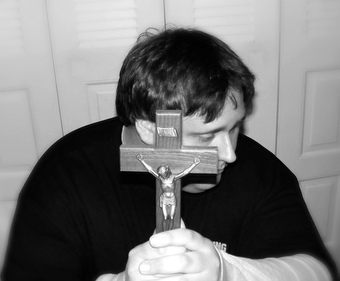
Catholic Religious Experience
Religious experience in Catholicism is accomplished by praying to Catholic religious symbols.
14.6: Religious Organizations
14.6.1: Cult
Cult refers to a religious movement or group whose beliefs or practices are considered abnormal or bizarre.
Learning Objective
Differentiate cults from sects, according to sociologists
Key Points
- In the 1930s, cults became the object of sociological study in the context of the study of religious behavior.
- American sociologist Howard P. Becker created four categories by splitting church into “ecclesia” and “denomination,” and sect into “sect” and “cult”.
- Cults, for Becker, were small religious groups lacking in organization and emphasizing the private nature of personal beliefs. Unlike sects, which are products of religious schism that maintain continuity with traditional beliefs, cults arise spontaneously around novel beliefs and practices.
- Those critical of cults share the assumption that some form of coercive persuasion or mind control is used by cult leaders to recruit and maintain members.
Key Terms
- apostate
-
A person who has renounced a religion or faith.
- ecclesia
-
The congregation, the group of believers, symbolic body or building.
- denomination
-
A class, or society of individuals, called by the same name; a sect; as, a denomination of Christians.
Example
- The Christian counter-cult movement is a social movement of Christian ministries and individual Christian counter-cult activists who oppose religious sects thought to either partially or entirely fail to abide by the teachings of the Bible. These religious sects are also known among Christians as cults or discernment ministries.
The word “cult” in current popular usage usually refers to a new religious movement or other group whose beliefs or practices are considered abnormal or bizarre. Originally denoting a system of ritual practices, the word was introduced into sociological classification in 1932 by American sociologist Howard P. Becker. In the 1930s, cults became the object of sociological study in the context of the study of religious behavior. They have been criticized by mainstream Christians for their unorthodox beliefs.
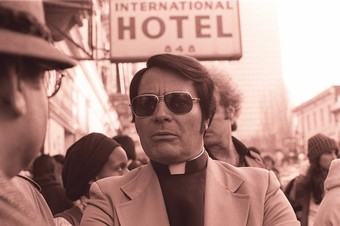
Rev. Jim Jones
Jim Jones was the leader of the Peoples Temple, a cult that committed a mass murder-suicide in 1978.
Becker’s Typology
Becker created four categories by splitting church into “ecclesia” and “denomination”, and sect into “sect” and “cult.” Cults, for Becker, were small religious groups lacking in organization and emphasizing the private nature of personal beliefs. Sociologists still maintain that unlike sects, which are products of religious schism that maintain continuity with traditional beliefs and practices, cults arise spontaneously around novel beliefs and practices.
While most scholars no longer refer to any new religious movements as cults, some sociologists still favor retaining the word as it was used in church-sect typologies. Other scholars and non-academic researchers who use the word do so from explicitly critical perspectives, focusing on the relationship between cult groups and the individuals who join them. These perspectives share the assumption that some form of coercive persuasion or mind control is used to recruit and maintain members by suppressing their ability to reason, think critically, and make choices in their own best interest. Mind control refers to a process in which a group or individual “systematically uses unethically manipulative methods to persuade others to conform to the wishes of the manipulator(s), often to the detriment of the person being manipulated. “
Opponents
Secular cult opponents like those belonging to the anti-cult movement tend to define a cult as a group that tends to manipulate, exploit, and control its members. Specific factors in cult behavior are said to include manipulative and authoritarian mind control over members, communal and totalistic organization, aggressive proselytizing, systematic programs of indoctrination, and perpetuation in middle-class communities. The role of former members, or “apostates,” has been widely studied by social scientists. At times, these individuals become outspoken public critics of the groups they leave. Their motivations, the roles they play in the anti-cult movement, the validity of their testimony, and the narratives they construct, are controversial. According to researchers who have studied apostates, there are several cases where hostile ex-members shade the truth and blow minor incidents out of proportion.
14.6.2: Sect
A sect is a group with distinctive religious, political, or philosophical beliefs.
Learning Objective
Evaluate the varying ways that sects have been understood over time.
Key Points
- Although in the past the term “sect” was mostly used to refer to religious groups, it has since expanded and in modern culture can refer to any organization that breaks away from a larger one to follow a different set of rules and principles.
- The historical usage of the term sect in Christianity has had pejorative connotations, referring to a group or movement with heretical beliefs or practices that deviate from those of groups considered orthodox.
- Among the first to define sects were the sociologists Max Weber and Ernst Troeltsch.
- There are differences between sects and cults in the degree that members are recruited and kept. A sect may also have members who choose to leave later, whereas a cult uses any means necessary to keep its members, including coercion.
- Sectarianism is sometimes defined in the sociology of religion as a worldview that emphasizes the unique legitimacy of believers’ creed and practices and that heightens tension with society.
- Sectarian violence refers to violence inspired by sectarianism. Some of the possible inputs for sectarian violence include power struggles, political climate, social climate, cultural climate, and economic landscape.
Key Terms
- sectarian violence
-
Sectarian violence or sectarian strife is violence inspired by sectarianism, that is, between different sects of one particular mode of ideology or religion within a nation or community.
- cult
-
A group of people with a religious, philosophical or cultural identity sometimes viewed as a sect, often existing on the margins of society or exploitative towards its members.
- sectarianism
-
Rigid adherence to a particular sect, party, or denomination.
Example
- Wherever people of different religions live in close proximity to each other, religious sectarianism can often be found in varying forms and degrees. In some areas, religious sectarians (for example Protestant and Catholic Christians in the United States) now exist peacefully side-by-side for the most part.
A sect is a group with distinctive religious, political, or philosophical beliefs. Although in the past it was mostly used to refer to religious groups, it has since expanded and in modern culture can refer to any organization that breaks away from a larger one to follow a different set of rules and principles. The term is occasionally used in a malicious way to suggest the broken-off group follows a more negative path than the original. The historical usage of the term “sect” in Christianity has had pejorative connotations, referring to a group or movement with heretical beliefs or practices that deviate from those of groups considered orthodox.
There are several different sociological definitions and descriptions for the term. Among the first to define them were the sociologists Max Weber and Ernst Troeltsch. In the church-sect typology, sects are described as newly formed religious groups that form to protest elements of their parent religion. A sect differs from cults in the degree that members are recruited and kept. Whereas the cult is able to enforce its norms and ideas against members, a sect has followers, sympathizers, supporters, or believers. A sect may also have members who choose to leave later, whereas a cult uses any means necessary to keep its members, including coercion.
Sectarianism is sometimes defined in the sociology of religion as a worldview that emphasizes the unique legitimacy of believers’ creed and practices and that heightens tension with the larger society by engaging in boundary-maintaining practices. Wherever people of different religions live in close proximity to each other, religious sectarianism can often be found in varying forms and degrees. In some areas, religious sectarians (for example Protestant and Catholic Christians in the United States) now exist peacefully side-by-side for the most part. Within Islam, there has been conflict at various periods between Sunnis and Shias. Shi’ites consider Sunnis to be damned, due to their refusal to accept the first Caliph as Ali and accept all following descendants of him as infallible and divinely guided. Many Sunni religious leaders, including those inspired by Wahhabism and other ideologies have declared Shias to be heretics and apostates.
The ideological underpinnings of attitudes and behaviors labeled as sectarian are extraordinarily varied. Members of a religious or political group may believe that their own salvation, or the success of their particular objectives, requires aggressively seeking converts from other groups. Adherents of a given faction may believe that for the achievement of their own political or religious project their internal opponents must be purged. Sectarian violence refers to violence inspired by sectarianism. Some of the possible inputs for sectarian violence include power struggles, political climate, social climate, cultural climate, and economic landscape.

Church-sect continuum
Before describing these different religions, it is important for the reader to understand that these classifications are a good example of what sociologists refer to as ideal types. Ideal types are pure examples of the categories. Because there is significant variation in each religion, how closely an individual religion actually adheres to their ideal type classification will vary.
14.6.3: The Christian Church
The Christian Church is the assembly of followers of Jesus Christ; in Christianity, a church is the building where its members meet.
Learning Objective
Describe the Church as the assembly of followers of Jesus Christ, and the building where its members meet.
Key Points
- The early Church originated in Roman Judea in the first century AD, founded on the teachings of Jesus of Nazareth, who is believed by Christians to be the Son of God and Christ the Messiah.
- The Eastern Orthodox Church and Oriental Orthodoxy each claim to be the original Christian Church. The Eastern Orthodox Church bases its claim primarily on its traditions and beliefs of the original Christian Church.
- The Roman Catholic Church teaches in its doctrine that it is the original Church founded by Christ and the Apostles in the 1st century AD.
- State churches are organizational bodies within a Christian denomination which are given official status or operated by a state.
- Churches of Christ are autonomous Christian congregations associated with one another through common beliefs and practices. Members of the Churches of Christ believe that Jesus founded only one church, that the current divisions between Christians are not God’s will, and that the only basis for restoring Christian unity is the Bible.
- Protestants believe that the Church, as described in the Bible, has a twofold character that can be described as the visible and invisible church. The invisible church consists of all those from every time and place who are vitally united to Christ through regeneration and salvation and who will be eternally united to Jesus Christ in eternal life. The visible church refers to the institutional body on earth which preaches the gospel and administers the sacrament.
- State churches are organizational bodies within a Christian denomination which are given official status or operated by a state.
Key Terms
- church
-
a Christian religious institution or building
- state churches
-
State churches are organizational bodies within a Christian denomination which are given official status or operated by a state.
- assembly
-
A legislative body; e.g., the General Assembly of the United Nations.
- Invisible Church
-
The invisible church or church invisible is a theological concept of an “invisible” body of the elect who are known only to God, in contrast to the “visible church”—that is, the institutional body on earth which preaches the gospel and administers the sacraments.
Example
- Churches of Christ are autonomous Christian congregations associated with one another through common beliefs and practices. They seek to base doctrine and practice on the Bible alone, and seek to be New Testament congregations as originally established by the authority of Christ.
The Christian Church is the assembly or association of followers of Jesus Christ. The four traditional notes of the Christian Church are unity, holiness, catholicity, and apostolicity. In the New Testament, the term “church,” which in Greek meant “assembly,” is used for local communities, and in a universal sense to mean all believers. In the Christian religion, a church is the building or structure used to facilitate the meeting of its members.
The “Original” Church
The early Church originated in Roman Judea in the first century AD, founded on the teachings of Jesus of Nazareth, who is believed by Christians to be the Son of God and Christ the Messiah. It is usually thought of as beginning with Jesus’ Apostles. The Eastern Orthodox Church and Oriental Orthodoxy each claim to be the original Christian Church. The Eastern Orthodox Church bases its claim primarily on its traditions and beliefs of the original Christian Church. By contrast, the Catholic Church teaches in its doctrine that it is the original Church founded by Christ on the Apostles in the 1st century AD. Since the Protestant Reformation, most Protestant denominations interpret “catholic,” especially in its creedal context, as referring to the Protestant concept of an eternal, invisible church of Christ and the Elect. Anglicans generally understand their tradition as a a middle path between Roman Catholicism and Eastern Christianity on one hand, and Protestantism on the other.
Churches of Christ
Churches of Christ are autonomous Christian churches associated with one another through common beliefs and practices. They seek to base doctrine and practice on the Bible alone, and seek to be New Testament congregations as originally established by the authority of Christ. Members of Churches of Christ believe that Jesus founded only one church, that the current divisions between Christians are not God’s will—the only basis for restoring Christian unity is the Bible. Many Protestants believe that the Church, as described in the Bible, has a twofold character that can be described as the visible and invisible church. The invisible church consists of all those from every time and place who are vitally united to Christ through regeneration and salvation and who will be eternally united to Jesus Christ in eternal life. The visible church—the institutional body on earth which preaches the gospel and administers the sacrament—consists of all those who visibly join themselves to a profession of faith and gathering together to know and serve the Head of the Church, Jesus Christ.
Political Significance
Churches can also have political significance around the world. State churches are organizational bodies within a Christian denomination, given official status or operated by a state. State churches are not necessarily national churches in the ethnic sense of the term, but the two concepts may overlap in a nation state where the state boundary largely corresponds to the distribution of a single ethnic group defined by a specific denomination. State churches, by contrast, may also be minority denominations which are given political recognition by the state.
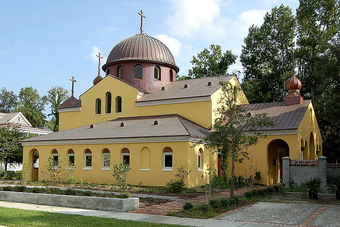
Holy Ascension Orthodox Church in Mount Pleasant
Different Christian Sects construct their own Churches, which are their places of worship
14.6.4: The Ecclesia
Ecclesias are different from churches because they typically must compete with other religious voices in a community.
Learning Objective
Distinguish ecclesia from churches and denominations.
Key Points
- While a church is an institution that acts as the religious guardian for all members of a community, and that tolerates no competition, an ecclesia is less successful at garnering absolute adherence among all members.
- State churches are organizational bodies within a Christian denomination that are either given official status by a state, or operated directly by a state. State churches in Western Europe are generally ecclesias.
- An ecclesial community is, in Roman Catholic terminology, a Christian religious group that does not meet the Roman Catholic definition of a church.
- In Catholic canon law, a church is an ecclesial community headed by a bishop or someone recognized as the equivalent of a bishop.
Key Terms
- state churches
-
State churches are organizational bodies within a Christian denomination which are given official status or operated by a state.
- ecclesial community
-
An ecclesial community is, in Roman Catholic terminology, a Christian religious group that does not meet the Roman Catholic definition of a “Church”.
- particular church
-
In Catholic canon law, a particular church is an ecclesial community headed by a bishop or someone equivalent to a bishop.
Example
- A Baptist church gathering is an ecclesial community.
Church is a classificatory term used to describe the institutional expression of religion. Churches typically tolerate no religious competition, and serve as the guardians and guides of spiritual life for a particular group of people. Churches can be contrasted with denominations, which do involve competition between religions. A church, through its institutional presence, typically strives to provide an all-encompassing worldview for its adherents. It is also almost always enmeshed with the political and economic structures of a society. A striking historical example of this is the Holy Roman Empire.
A slight modification of the church type is that of ecclesia. Ecclesias include the above characteristics of churches, but they are generally less successful at garnering absolute adherence among all of the members of the society. Ecclesias are also typically not the sole religious body in a particular societal space. The state churches of some European nations would fit this type. State churches are organizational bodies within a Christian denomination that have been given official status by a state, or are directly operated by a state. The Anglican Church of England, for example, is a state church that does not have the adherence of all English citizens. Because of this, it is considered an ecclesia.
An ecclesial community is, in Roman Catholic terminology, a Christian religious group that does not meet the Roman Catholic definition of a church. Although the word “ecclesial” itself stems from the Greek word for “church” or “gathering,” ecclesias are not necessarily churches. The Catholic Church applies the word “Church” only to Christian communities that, in the view of the Catholic Church, “have true sacraments in light of Apostolic succession” and that possess a priesthood and the Eucharist. In this way, certain ecclesia fail to meet the requirements for a church. In Catholic canon law, a particular church is an ecclesial community headed by a bishop or an equivalent figure.
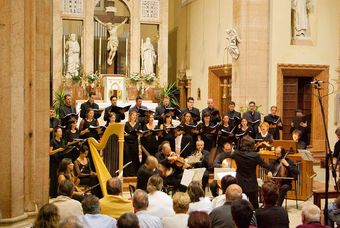
Choir of an Ecclesia
Catholic Mass
14.6.5: Religious Denominations
A religious denomination is a subgroup within a religion that operates under a common name, tradition, and identity.
Learning Objective
Explain why denominations form within religions.
Key Points
- Christian denominations include Eastern Orthodox, Anglicanism, and the many varieties of Protestantism.
- The four branches of Judaism include Orthodox, Conservative, Reform, and Reconstructionist.
- The two main branches of Islam are Sunni and Shia.
- Denominationalism is the division of one religion into separate groups, sects, schools of thought, or denominations.
- In Christianity, non-denominational institutions or churches are those not formally aligned with an established denomination, or that remain otherwise officially autonomous.
- Ecumenism mainly refers to initiatives aimed at greater Christian unity or cooperation.
- The term interfaith dialogue refers to cooperative, constructive, and positive interaction between people of different religious traditions and spiritual or humanistic beliefs
Key Terms
- denominationalism
-
The division of one religion into separate groups, sects, schools of thought, or denominations.
- ecumenism
-
Ecumenism mainly refers to initiatives aimed at greater Christian unity or cooperation.
- interfaith dialogue
-
The term interfaith dialogue refers to cooperative, constructive, and positive interaction between people of different religious traditions (i.e., “faiths”) or spiritual or humanistic beliefs, at both the individual and institutional levels. It is distinct from syncretism or alternative religion; this dialogue often promotes understanding between different religions to increase acceptance of others, rather than attempting to synthesize new beliefs.
Example
- Christianity has different denominations such as Protestantism and Catholicism, among others.
A religious denomination is a subgroup within a religion that operates under a common name, tradition, and identity. The term describes various Christian denominations (for example, Eastern Orthodox, Anglicanism, and the many varieties of Protestantism). The term also describes the four branches of Judaism (Orthodox, Conservative, Reform, and Reconstructionist), and describes the two main branches of Islam (Sunni and Shia). Denominationalism is the division of one religion into separate groups, sects, schools of thought, or denominations.
Denominations often form slowly over time for many reasons. Due to historical accidents of geography, culture and influence between different groups, members of a given religion slowly begin to diverge in their views. Members of a religion may find that they have developed significantly different views on theology, philosophy, religious pluralism, ethics, and religious practices and rituals. Consequently, different denominations may eventually form. In other cases, denominations form very rapidly, from a split or schism in an existing denomination, or if people share an experience of spiritual revival or spiritual awakening and subsequently choose to form a new denomination.
In Christianity, non-denominational institutions or churches are those not formally aligned with an established denomination or those that remain otherwise officially autonomous. Non-denominational congregations may establish a functional denomination via mutual recognition by other congregations with commonly held doctrine, policy, and worship—without formalizing external direction or oversight in such matters. Some non-denominational churches explicitly reject the idea of a formalized denominational structure as a matter of principle, holding that each congregation is better off being autonomous.
In a similar but different vein, ecumenism mainly refers to initiatives aimed at greater Christian unity or cooperation. It is used predominantly with reference to Christian denominations and churches separated by doctrine, history, and practice. Within this particular context, the term ecumenism refers to the idea of a Christian unity in the literal meaning: that there should be a single Christian Church. At a broader level, the term “interfaith dialogue” refers to cooperative, constructive, and positive interaction between people of different religious traditions and spiritual or humanistic beliefs—at both an individual and institutional level.
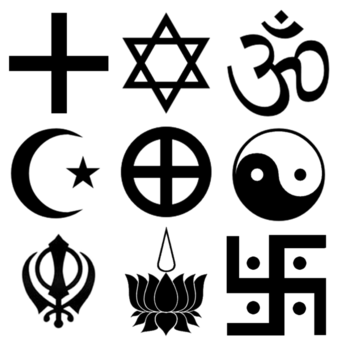
Religious Symbols
Symbols of Various Faiths
14.7: The Structure of Religion in the U.S.
14.7.1: Religion in the U.S.
Due to the First Amendment, which grants freedom of religion, there is a diversity of religious beliefs and practices in the U.S.
Learning Objective
Discuss the relationship between religion and government in the United States
Key Points
- The First Amendment specifically denies the Federal Government the power to enact any law respecting either an establishment of religion or prohibiting its free exercise, thus protecting any religious organization, institution, or denomination from government interference.
- European Rationalist and Protestant ideals influenced the development of separation between state and religious affairs.
- The majority of Americans (76% to 80%) identify themselves as Protestants or Catholics, accounting for 51% and 25% of the population respectively.
Key Terms
- creed
-
That which is believed; accepted doctrine, especially religious; a particular set of beliefs; any summary of principles or opinions professed or adhered to.
- Religious Organization
-
Religious activities generally need some infrastructure to be conducted. For this reason, there generally exist religion-supporting organizations, which are some form of organization that manage the upkeep of places of worship, e.g., mosques, prayer rooms, other similar edifices or meeting places, and the payment of salaries to priests, ministers, or religious leaders. In addition, such organizations usually have other responsibilities, such as the formation, nomination, or appointment of religious leaders; the establishment of a corpus of doctrine; the disciplining of priests or other people with respect to religious law; and the determination of qualification for membership.
- First Amendment
-
The First Amendment (Amendment I) to the United States Constitution is part of the Bill of Rights. The amendment prohibits the making of any law respecting an establishment of religion, impeding the free exercise of religion, abridging the freedom of speech, infringing on the freedom of the press, interfering with the right to peaceably assemble or prohibiting the petitioning for a governmental redress of grievances.
Example
- Religions such as Islam, Judaism, and Hinduism have been accepted in American society despite the country’s majority Christian population. The separation of the church and state has allowed the private practice of diverse religions.
Religion in the United States is characterized by both a diversity of religious beliefs and practices, and by a high adherence level. A wide variety of religious choices have been available to the U.S. population due to the First Amendment of the Constitution, which allows freedom of religion.
Separation of Church and State in the United States
The framers of the Constitution modeled the provisions concerning religion within the Virginia Statute for Religious Freedom and rejected any religious test for office. The First Amendment specifically denies the Federal Government the power to enact any law respecting either an establishment of religion or prohibiting its free exercise. This amendment protects any religious organization, institution, or denomination from government interference. The decision was mainly influenced by European Rationalist and Protestant ideals, but was also a consequence of the pragmatic concerns of minority religious groups and small states that did not want to be under the power or influence of a national religion that did not represent their beliefs.
Robert N. Bellah has argued that although the separation of church and state is grounded firmly in the Constitution of the United States, this does not mean that there is no religious dimension in the political society of the United States. He used the term “civil religion” to describe the specific relation between politics and religion in the United States. His 1967 article, “Civil religion in America,” analyzes the inaugural speech of John F. Kennedy: “Considering the separation of church and state, how is a president justified in using the word ‘God’ at all? The answer is that the separation of church and state has not denied the political realm a religious dimension. “
Robert S. Wood has argued that the United States is a model for the world in terms of how a separation of church and state—no state-run or state-established church—is good for both the church and the state, allowing a variety of religions to flourish. Speaking at the Toronto-based Center for New Religions, Wood said that the freedom of conscience and assembly allowed under such a system has led to a “remarkable religiosity” in the United States that isn’t present in other industrialized nations. Wood believes that the United States operates on “a sort of civic religion,” which includes a generally shared belief in a creator who “expects better of us.” Beyond that, individuals are free to decide how they want to believe and fill in their own creeds and express their conscience. He calls this approach the “genius of religious sentiment in the United States. “
Religious Affiliation in the United States
The majority of Americans (76% to 80%) identify themselves as Protestants or Catholics, accounting for 51% and 25% of the population respectively, according to one survey by Trinity College. Non-Christian religions (including Judaism, Islam, Buddhism, Hinduism, etc.) collectively make up about 5% of the adult population. Another 15% of the adult population claims no religious affiliation. When asked, about 5.2% said they did not know or refused to reply. According to the American Religious Identification Survey, religious belief varies considerably by region. The lowest rate is in the West, with 59% reporting a belief in God, and the highest rate is in the South (the “Bible Belt”) at 86%.
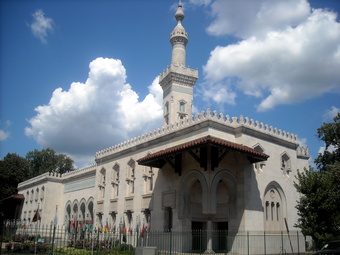
Islamic Center
Islamic Center of Washington located at 2551 Massachusetts Avenue NW in Washington, D.C.
14.7.2: Religious Diversity
Religion in the United States is characterized by both a wide diversity in religious beliefs and practices and by a high adherence level.
Learning Objective
Discuss the scope of religious diversity in the United States
Key Points
- According to the U.S. Census, the most common religions in the United States are Christianity, Judaism, Islam, Buddhism, Hinduism, and unaffiliated religions, including atheists or agnostics.
- Religious pluralism is an attitude or policy regarding the diversity of religious belief systems co-existing in society.
- Interfaith dialogue refers to dialogue between members of different religions for the goal of reducing conflicts between their religions and to achieve agreed-upon, mutually desirable goals.
- Freedom of religion encompasses all religions acts within the law in a particular region.
Key Terms
- interfaith dialogue
-
The term interfaith dialogue refers to cooperative, constructive, and positive interaction between people of different religious traditions (i.e., “faiths”) or spiritual or humanistic beliefs, at both the individual and institutional levels. It is distinct from syncretism or alternative religion; this dialogue often promotes understanding between different religions to increase acceptance of others, rather than attempting to synthesize new beliefs.
- religious pluralism
-
The peaceful coexistence of multiple religions in a community.
- freedom of religion
-
The right of citizens to hold any religious or non-religious beliefs, and to carry out any practices in accordance with those beliefs, so long as they do not interfere with another person’s legal or civil rights, or any reasonable laws, without fear of harm or prosecution.
Example
- The United States under the First Amendment allows people to practice their religious beliefs, despite differences in creed or culture. Indeed the United States is quite religiously diverse.
Religion in the United States is characterized by both a wide diversity in religious beliefs and practices and by a high adherence level. A majority of Americans report that religion plays a “very important” role in their lives, a proportion unique among developed nations. Many faiths have flourished in the United States, including those spanning the country’s multicultural immigrant heritage, as well as those founded within the country; these have led the United States to become one of the most religiously diverse countries in the world.
The U.S. Census does not ask about religion. Various groups have conducted surveys to determine approximate percentages of those affiliated with each religious group. Some surveys ask people to self-identify, while others calculate church memberships. According to the census, religion in the United States is comprised of Christianity, Judaism, Islam, Buddhism, Hinduism, and the unaffiliated, including atheists or agnostics.
The largest religion in the United States is Christianity, practiced by the majority of the population. Due to its large population and history, the United States has numerically more Christians (and more Protestants) than any other country in the world. After Christianity and no-religion, Judaism is the third-largest religious affiliation in the United States, though this identification is not necessarily indicative of religious beliefs or practices. A significant number of people identify themselves as American Jews on ethnic and cultural grounds, rather than religious ones. On the other hand, American Islam effectively began with the arrival of African slaves. It is estimated that about 10% of African slaves transported to the United States were Muslim. Research indicates that Muslims in the United States are generally more assimilated and prosperous than Muslims in Europe.
Religious pluralism is an attitude or policy regarding the diversity of religious belief systems co-existing in society. Religious pluralism is sometimes used as a synonym for interfaith dialogue. Interfaith dialogue refers to dialogue between members of different religions for the goal of reducing conflicts between their religions and to achieve agreed upon mutually desirable goals. Freedom of religion encompasses all religions acting within the law in a particular region, whether or not an individual religion accepts that other religions are legitimate or that freedom of religious choice and religious plurality, in general, are good things.
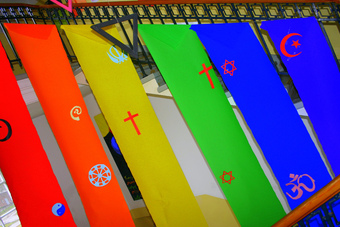
Religious Diversity
Religious symbols represented in this picture reflect the religious diversity in the United States. Among the symbols one can recognize Islam, Judaism, Christianity, and Buddhism.
14.7.3: Widespread Belief
Christianity is the largest religion in the United States, with around 77% of the population identifying itself as Christian.
Learning Objective
Identify the most common and popular religions in the United States
Key Points
- Christian denominations in the U.S. are usually divided into three large groups: Evangelical, Mainline Protestant and Roman Catholic.
- The mainline Protestant Christian denominations were brought to the U.S. by its historic immigrant groups; for this reason they are sometimes referred to as heritage churches.
- Other parts of the world have different widespread beliefs. Islam, for example, dominates the Middle East.
Key Terms
- evangelicalism
-
Protestant movement basing its theology almost entirely on Scripture, which is held to be inerrant.
- Roman Catholicism
-
The Catholic Church, also known as the Roman Catholic Church, is the world’s largest Christian church, with more than one billion members worldwide.
- Mainline Protestantism
-
Mainline Protestant (also sometimes called “mainstream American Protestant”) are certain Protestant churches in the United States that comprised a majority of Americans from the colonial era until the early 20th century.
Example
- The Protestant denominations encompass a wide array of religious beliefs. That is, there are various denominations within Protestantism including Evangelicals, Methodists and Baptists.
It is common for many societies to be dominated by a single widespread belief. For example, Christianity is the largest and most popular religion in the United States, with around 77% of those polled identifying themselves as Christian as of 2009. Protestant denominations accounted for 51.3%, while Roman Catholicism, at 23.9%, was the largest individual denomination. One study categorizes white evangelicals, 26.3% of the population, as the country’s largest religious cohort, while another study estimates evangelicals of all races at 30–35%. Christianity was introduced to the Americas in the 16th and 17th centuries by European colonization.
Today, most Christian denominations in the United States are divided into three large groups: Evangelicalism, Mainline Protestantism and Roman Catholicism. Christian denominations that do not fall within either of these groups are mostly associated with ethnic minorities, i.e. the various denominations of Eastern Orthodoxy. Evangelicalism is a Protestant Christian movement. In typical usage, the term mainline is contrasted with evangelical. Most adherents consider its key characteristics to be:
- a belief in the need for personal conversion (or being “born again”)
- some expression of the gospel
- a high regard for Biblical authority
- an emphasis on the death and resurrection of Jesus.
Other parts of the world have different widespread beliefs. Islam, for example, dominates the Middle East, with Pakistan, Bangladesh, Iran, Turkey, Egypt, Algeria, Morocco, Iraq, Sudan, Afghanistan, Uzbekistan, Saudi Arabia, Yemen, Syria, and Niger having 90% or more of their population identifying as Muslim. Islam is also the state religion in areas of Asia, the Middle East and North Africa .
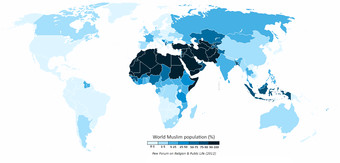
Worldwide Muslim Population
As the map shows, certain regions are dominated by widespread beliefs.
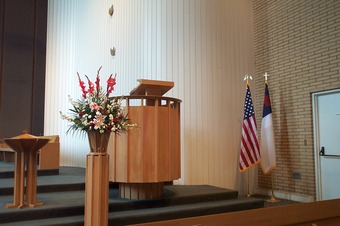
Christian Flag at Covenant Presbyterian Church
The Christian flag displayed with the flag of the USA; note the finials on the flag poles. This is next to the pulpit and baptismal font in Covenant Presbyterian Church, Long Beach, California, USA;
14.7.4: Ecumenism
Ecumenism mainly refers to initiatives aimed at creating greater Christian unity or cooperation.
Learning Objective
Define ecumenism and its central features
Key Points
- Ecumenism contrasts with interfaith dialogue, which aims at unity, respect, and cooperation among diverse religions, under the auspices of a shared sense of spirituality.
- Despite many disagreements over ecumenism and how to approach interfaith dialogue, there exists a sizable group of Orthodox Christians who are vehemently opposed to any kind of interfaith dialogue.
- The general understanding of the ecumenical movement is that it came from the Roman Catholic Church’s attempts to reconcile with Christians who had become separated over theological issues.
Key Terms
- ecumenism
-
Ecumenism mainly refers to initiatives aimed at greater Christian unity or cooperation.
- interfaith dialogue
-
The term interfaith dialogue refers to cooperative, constructive, and positive interaction between people of different religious traditions (i.e., “faiths”) or spiritual or humanistic beliefs, at both the individual and institutional levels. It is distinct from syncretism or alternative religion; this dialogue often promotes understanding between different religions to increase acceptance of others, rather than attempting to synthesize new beliefs.
- Orthodox Christians
-
The Eastern Orthodox Church, officially called the Orthodox Catholic Church and commonly referred to as the Orthodox Church, is the second largest Christian church in the world, with an estimated 300 million adherents mainly in the countries of Russia, Belarus, Ukraine, Moldova, Georgia, Romania, Serbia, Montenegro, Bosnia and Herzegovina, Macedonia, Bulgaria, Greece, and Cyprus, all of which — except Bosnia — are majority Eastern Orthodox. It teaches that it is the One, Holy, Catholic and Apostolic Church established by Jesus Christ and his Apostles almost 2,000 years ago.
Example
- Interfaith dialogue can occur between different religious denominations that come together and work for a common purpose within their communities.
Ecumenism refers to initiatives aimed at greater Christian unity or cooperation . As a term, it usually only refers to predominantly Christian denominations and churches separated by doctrine, history, and practice. Within this particular context, ecumenism refers to the idea that Christians should literally unify under a single Christian church. Ecumenism contrasts with the practice of interfaith dialogue, which is aimed at unity, respect, and cooperation among diverse religions. Interfaith dialogue, also known as interfaith pluralism, refers to “religious unity” not in the sense of a single church, but instead by the advocacy of a greater sense of shared spirituality.

Ecumenism Symbol
Ecumenism mainly refers to initiatives aimed at greater Christian unity or cooperation.
The ecumenical movement is understood to have emerged from the Roman Catholic Church’s attempts reconcile with other Christians who had separated over theological issues. Although this is not the case with all Catholics, most ecumenical Catholics have the goal of reconciling all those with a Christian faith in a single, visible organization, through a union with the Roman Catholic Church. For some Protestants, spiritual unity, and unity in how a church teaches central issues, sufficiently represents this general movement.
The Oriental Orthodox and Eastern Orthodox churches are two distinct bodies of local churches. Within each body, the churches share full communion, although there is not official communion between the two bodies. Many theologians of the Eastern and Oriental Orthodoxies engage in theological dialogue with each other and with some Western churches, but this stops short of full communion.
Members of the Anglican Communion, in the United Kingdom, have generally embraced the Ecumenical Movement, and actively participate in organizations like the World Council of Churches and the NCCC. Within the Anglican Communion, each member church is allowed to make its own decision with regard to intercommunion.
Despite many disagreements over ecumenism and how to approach interfaith dialogue, there exists a sizable group of Orthodox Christians who are vehemently opposed to any kind of interfaith dialogue, whether with other Christian denominations or with religions outside Christianity. In the Eastern Orthodox world, the monastic community of Mount Athos has voiced its concerns regarding the ecumenist movement. They do not want the Orthodox church to play a part in this more general movement.
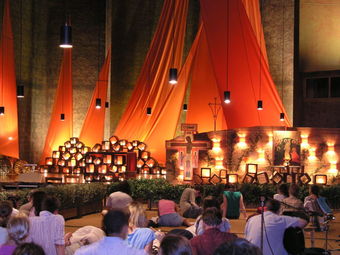
Taize Prayer
Ecumenical worship service at the monastery of Taizé
14.7.5: Characteristics of Members of Different Religions
Religion plays a “very important” role in the lives of most Americans; a proportion unique among developed nations.
Learning Objective
Identify the characteristics and defining features of members belonging to different religions in the United States
Key Points
- The most prevalent religion in the U.S. is Christianity. Northern European peoples introduced Protestantism, while the Spanish, French, and English introduced Catholicism.
- The Jewish community in the United States is composed predominantly of Ashkenazi Jews who emigrated from Central and Eastern Europe, as well as their U.S.-born descendants.
- American Islam effectively began with the arrival of African slaves. Research indicates that Muslims in the U.S. are generally more assimilated and prosperous than Muslims in Europe.
- Buddhism entered the U.S. during the 19th century with the arrival of the first immigrants from Eastern Asia.
- Sikhs have been a part of the American populace for more than 130 years.
- Buddhism entered the U.S. during the 19th century with the arrival of the first immigrants from Eastern Asia.
- The first time Hinduism entered the U.S. is not clearly identifiable.
- Sikhs have been a part of the American populace for more than 130 years.
Key Terms
- Judaism
-
A world religion tracing its origin to the Hebrew people of the ancient Middle-East, as documented in religious writings known as the Torah or Old Testament.
- Protestantism
-
Protestantism is one of the major groupings within Christianity. It has been defined as “any of several church denominations denying the universal authority of the Pope and affirming the Reformation principles of justification by faith alone, the priesthood of all believers, and the primacy of the Bible as the only source of revealed truth. ” More broadly, it means Christianity outside “of a Catholic or Eastern church. “
- American Islam
-
From the 1880s to 1914, several thousand Muslims immigrated to the United States from the Ottoman Empire and from parts of South Asia; they did not form distinctive settlements, and probably mostly assimilated into the wider society.
Example
- Members of the Muslim community in the United States mostly come from a middle class or affluent background. In addition, many Jews immigrated to the U.S. as a result of WWII and their persecution during the Holocaust.
Religion plays a “very important” role in the lives of most Americans, a proportion unique among developed nations. Many faiths have flourished in the United States, including later imports spanning the country’s multicultural immigrant heritage and those founded within the country, These disparate faiths have led the U.S. to become one of the most religiously diverse countries in the world.
The largest religion in the U.S. is Christianity, practiced by the majority of the population. From those queried, roughly 51.3% of Americans are Protestants, 25% are Catholics, 1.7% are Mormons, and 1.7% are of various other Christian denominations. Northern European peoples introduced Protestantism. Among Protestants, Anglicans, Baptists, Puritans, Presbyterians, Lutherans, Quaker, and Moravians were the first to settle to the U.S. The Spanish, French and English introduced Catholicism. The religion came with the arrival of Hispanics/Latinos, Irish, Highland Scots, Italians, Dutch, Flemish, Polish, French, Hungarians, German, and Lebanese immigrants.
American Jews are citizens of the Jewish faith or ethnicity. The Jewish community in the U.S. is composed predominantly of Ashkenazi Jews who emigrated from Central and Eastern Europe, as well as their U.S.-born descendants. Depending on religious definitions and varying population data, the U.S. is home to the largest or second largest Jewish community in the world, after Israel. In 2007, the population of American adherents of Judaism was estimated to be approximately 5,128,000, or 1.7% of the total population .
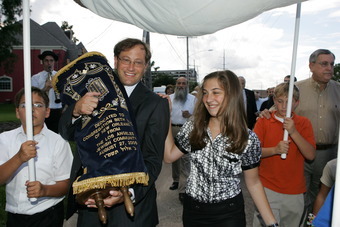
Hayley Fields at the Beth Israel Torah Dedication Ceremony
Two weeks after Hurricane Katrina struck the Gulf Coast, volunteers with an Israeli charity rescued seven Torah scrolls from the synagogue.
American Islam effectively began with the arrival of African slaves. It is estimated that about 10% of African slaves transported to the U.S. were Muslim. Research indicates that Muslims in the U.S. are generally more assimilated and prosperous than Muslims in Europe. Like other subcultural and religious communities, the Islamic community has generated its own political organizations and charity organizations.
Buddhism entered the U.S. during the 19th century with the arrival of the first immigrants from Eastern Asia. The first Buddhist temple was established in San Francisco in 1853 by Chinese Americans. The first time Hinduism entered the U.S. is not clearly identifiable. During the 1960s and 1970s, Hinduism exercised a fascination that contributed to the development of New Age thought. Sikhs have been a part of the American populace for more than 130 years. Around 1900, the state of Punjab of British India was hit hard by British practices of mercantilism. Many Sikhs emigrated to the United States, and began working on farms in California.
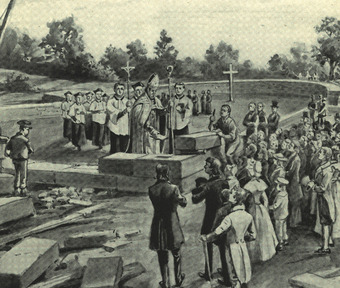
Baltimore Cornerstone
John Carroll, bishop of Baltimore, lays the cornerstone for the Cathedral of the Assumption in Baltimore, the first cathedral in the United States.
14.7.6: Secularism and the Future of Religion
Most modern Western societies are recognized as secular because they enjoy near-complete freedom of religion.
Learning Objective
Discuss the rise of secularism and its response in the West
Key Points
- The secularization of a society refers to the process it undergoes when it shifts away from closely identifying with religious values and institutions towards affiliating with nonreligious values and institutions.
- The term secularization was coined by the British writer George Jacob Holyoake in 1851 and is most closely associated with the Age of Enlightenment in Europe.
- In a political context, secularization is the separation of the state from the church.
- When speaking of social structures, secularization refers to the increasing division of labor and occupational specialization in society (differentiation).
- Evidence suggests that “no religion” is becoming an increasingly prevalent religious status in the United States.
Key Terms
- Age of Enlightenment
-
A period of time ranging from part of the 17th Century through much of the 18th Century, characterized particularly by the importance of logic and reason.
- separation of church and state
-
The separation of church and state is the distance in the relationship between organized religion and the nation state.
In studies of religion, modern Western societies are generally recognized as secular. This is due to the near-complete freedom of religion, the fact that beliefs on religion generally are not subject to legal or social sanctions. Some societies become increasingly secular as the result of social processes, rather than through the actions of a dedicated secular movement; this process is known as secularization. Secularization is the transformation of a society from close identification with religious values and institutions toward nonreligious values and secular institutions. The secularization thesis refers to the belief that as societies “progress,” particularly through modernization and rationalization, religion loses its authority in all aspects of social life and governance.
Secularism
Coined by the British writer George Jacob Holyoake in 1851, secularism is often associated with the Age of Enlightenment in Europe, and it now plays a major role in Western society. In political terms, secularism is a movement towards the separation of church and state. This can refer to reducing ties between a government and a state religion, replacing laws based on scripture with civil laws, and eliminating discrimination on the basis of religion. This is said to add to democracy by protecting the rights of religious minorities. Due in part to the belief in the separation of church and state, secularists tend to prefer that politicians make decisions for secular rather than religious reasons. In this respect, policy decisions pertaining to topics like abortion, contraception, embryonic stem cell research, same-sex marriage, and sex education are the prominent issues many secularist organizations focus on.
Secularization in Different Realms
When discussing social structures, secularization can refer to differentiation. Differentiation refers to the increasing division of labor and occupational specialization in society. When discussing institutions, secularization can refer to the transformation of an institution that had once been considered religious in character into something not thought of as religious. When discussing activities, secularization refers to the transfer of activities from institutions of a religious nature to others without that character. Finally, when discussing religion, secularization can only be used unambiguously to refer to religion in a generic sense. For example, a reference to Christianity is not clear unless one specifies exactly which denominations of Christianity are being discussed.
Responses to Secularization
Because religion continues to be recognized in Western thought as a universal impulse, many religious practitioners have aimed to band together in interfaith dialogue, cooperation, and religious peace-building. Recent interfaith initiatives include “A Common Word,” launched in 2007, which is focused on bringing Muslim and Christian leaders together, the “C1 World Dialogue,” the “Common Ground” initiative between Islam and Buddhism, and a United Nations sponsored “World Interfaith Harmony Week. “
Some evidence suggests that the fastest growing religious status in the United States is “no religion” Irreligion is the absence of religion, an indifference towards religion, a rejection of religion, or hostility towards religion. When characterized as the rejection of religious belief, it includes atheism and secular humanism. When characterized as hostility towards religion, it includes antitheism, anticlericalism and antireligion.
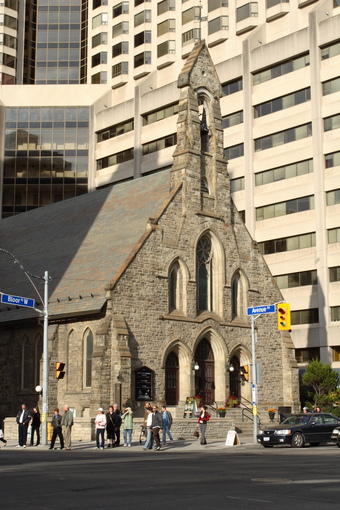
Sacred and Secular
The secularization thesis refers to the belief that as societies “progress,” particularly through modernization and rationalization, religion loses its authority in all aspects of social life and governance.
14.8: Major Religions in the U.S.
14.8.1: Protestantism
Protestantism is one of the major umbrella religions in the U.S., and is constantly evolving in response to political and social changes.
Learning Objective
Describe the various sects of Protestantism and four key moments in their history in the U.S., including any resitance to those moments
Key Points
- Evangelicalism is the conversion of individuals, through the preaching of the Word. from a state of sin to a “new birth”.
- The Great Awakening refers to a northeastern Protestant revival movement that took place in the 1730s and 1740s.
- The Second Great Awakening has been called the central and defining event in the development of Afro-Christianity. It began after many African Americans became dissatisfied with their treatment in white churches, and disappointed by their fellow believers’ disinterest in abolishing slavery.
- The Federal Council of Churches, founded in 1908, marked the first major expression of a growing, modern ecumenical movement among Christians in the United States.
- The National Council of the Churches of Christ in the United States represented, in the 1950s, an extension and expansion of the Federal Council of Churches, the International Council of Religious Education, and several other interchurch ministries.
- Rev. Martin Luther King, Jr. was but one of many notable black ministers involved in the Civil Rights Movement.
- Rev. Martin Luther King, Jr. was but one of many notable black ministers involved in the Civil Rights Movement.
Key Terms
- Civil Rights Movement
-
The civil rights movement was a worldwide political movement for legal equality that occured between approximately 1950 and 1980.
- National Council of the Churches of Christ
-
The National Council of the Churches of Christ in the USA (usually identified as National Council of Churches or NCC) is an ecumenical partnership of 37 Christian faith groups in the United States. Its member denominations, churches, conventions, and archdioceses include Mainline Protestant, Orthodox, African American, Evangelical, and historic peace churches.
Example
- There are different kinds of Protestant denominations such as Methodists and Baptists, which are both Christian. However, they have different congregations due to their different interpretations of the Christian Protestant faith.
The Movement of Christianity to North America
Christianity was introduced to North America when Europeans began colonizing the continent in the 16th and 17th centuries. Spanish, French and British colonists brought Roman Catholicism to the colonies of New Spain, New France and Maryland, respectively. Colonists from Northern Europe, primarily from Great Britain, introduced Protestantism to a number of areas, including Massachusetts Bay Colony, New Netherlands, the Virginia colony, the Carolina Colony, Newfoundland, Labrador, and Lower Canada. These early Protestant settlers represented a diversity of Protestant sects, including Anglicanism, Baptism, Congregationalism, Presbyterianism, Lutheranism, Quakerism, the Mennonite Church and the Moravian Church.
Evangelicalism and the Great Awakening
Evangelicalism in Protestantism is difficult to both date and define. Scholars have argued that, as a self-conscious movement, evangelicalism did not arise until the mid-17th century, perhaps not until the Great Awakening. The fundamental premise of evangelicalism is that individuals can be converted, through preaching the Word, from a state of sin to a “new birth. ” The Great Awakening refers to a northeastern Protestant revival movement that took place in the 1730s and 1740s.
The first generation of New England Puritans required that church members undergo a conversion experience that they could then describe publicly. While initially popular, their descendants were not as successful in reaping the harvests of redeemed souls. The initial movement began with Jonathan Edwards, a Massachusetts preacher who sought to return to the Pilgrims’ strict Calvinist roots. British preacher George Whitefield, as well as other itinerant preachers, spread the movement, traveling across the colonies and preaching in a dramatic and emotional style. Followers of Edwards, and other preachers of similar religiosity, called themselves the “New Lights” in contrast to the “Old Lights,” who disapproved of their movement. To promote their viewpoints, the two sides established academies and colleges, including Princeton and Williams College. The Great Awakening has been called the first truly American event.
The supporters of the Awakening and its evangelical thrust, Presbyterians, Baptists, and Methodists, became the largest American Protestant denominations by the first decades of the 19th century. By the 1770s, the Baptists were growing rapidly both in the North (where they founded Brown University), and in the South. Opponents of the Awakening or those split by it, Anglicans, Quakers, and Congregationalists, were left behind.
Christianity and Black Populations
The Christianity of the black population was grounded in evangelicalism. The Second Great Awakening has been called the “central and defining event in the development of Afro-Christianity. ” During this movement, Baptists and Methodists converted large numbers of blacks. However, many were disappointed at the treatment they received from their fellow believers. They were also disappointed that Baptists and Methodists, many of whom had advocated for abolition after the American Revolution, ended up backsliding on that commitment. When their discontent could not be contained, forceful black leaders followed what was becoming an American habit, and they formed new denominations. In 1787, Richard Allen and his colleagues in Philadelphia broke away from the Methodist Church and, in 1815, they founded the African Methodist Episcopal (AME) Church. This church, along with independent black Baptist congregations, flourished as the century progressed.
Coalitions of Churches
The Federal Council of Churches, founded in 1908, marked the first major expression of a growing, modern ecumenical movement among Christians in the United States. It was active in advocating for the reform of public and private policies, particularly as they impacted the lives of impoverished people. This council developed a comprehensive and widely debated Social Creed, which served as a humanitarian “bill of rights” for those seeking improvements in American life.
In 1950, the National Council of the Churches of Christ in the USA (usually identified as National Council of Churches, or NCC) represented a dramatic expansion in the development of ecumenical cooperation. It was a merger of the Federal Council of Churches, the International Council of Religious Education, and several other interchurch ministries. Today, the NCC is a joint venture of 35 Christian denominations in the United States. It has 100,000 local congregations and 45,000,000 adherents.
As the center of community life, Black churches played a leadership role in the Civil Rights Movement. Their history, as a focal point for the Black community, and as a link between the Black and White worlds, made them natural for this purpose. Rev. Martin Luther King, Jr. was but one of many notable Black ministers involved in the movement. He helped found the Southern Christian Leadership Conference (1957), serving as its first president. King received the Nobel Peace Prize for his efforts to end segregation and racial discrimination through non-violent civil disobedience. He was assassinated in 1968 .
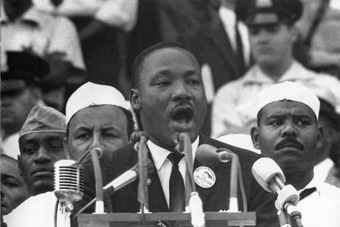
Dr. Martin Luther King Jr.
Dr. Martin Luther King Jr. delivering his famous “I Have a Dream” speech
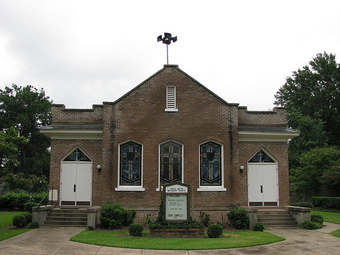
Methodist Church in Mississippi
Louise United Methodist Church, Louise, Mississippi
14.8.2: Catholicism
Catholicism has a long history in the U.S., with the Catholic Church the single largest religious denomination in the United States.
Learning Objective
Describe why Catholics in the U.S. were initially perceived as a threat by some Protestants and how that bias was more or less overcome
Key Points
- The Pope is the head of the Catholic Church and faith.
- Immigrants in the 19th century made Catholicism the largest religion in the United States.
- Acquisition of territories in the 19th century, formerly possessions of France, Spain, and Mexico, added to the Catholic population in the United States.
Key Term
- parish
-
An administrative part of a diocese that has its own church; found in the Anglican, Eastern Orthodox and Catholic Church and certain civil government entities.
Example
- Estimates of the overall American Catholic population from recent years generally range from 20% to 28%.
The Catholic Church in the United States is part of the worldwide Catholic Church, or the Christian Church that is in full communion with the Pope. It is the largest single religious denomination in the U.S., comprising about 25% of the population. According to a 2011 study by the Center for Applied Research in the Apostolate at Georgetown University, the U.S. Catholic population is currently 77.7 million. The U.S. has the fourth largest Catholic population in the world after Brazil, Mexico and the Philippines.
Catholicism arrived in what is now the U.S. during the earliest days of the European colonization of the Americas. The first Catholic missionaries were Spanish, having come with Christopher Columbus to the New World on his second voyage in 1493. They established missions in what are now Florida, Georgia, Texas, New Mexico, California, and the Commonwealth of Puerto Rico. French colonization came in the early 18th century, with the French establishing missions in the Louisiana Territory districts – St. Louis, New Orleans, Biloxi, Mobile, Alabama, Natchez, Yazoo, Natchitoches, Arkansas, Illinois, and Michigan.
Catholicism’s Growth and Prosecution
Catholicism has grown during the country’s history. It started slowly in the early 19th century through immigration and acquisition of territories with predominately Catholic populations. In the mid-19th century, a rapid influx of Irish and German immigrants made Catholicism the largest religion in the U.S. This increase of Catholics was met by widespread prejudice and hostility, often resulting in riots and the burning of churches. The nativist Know Nothing party was first founded in the early 19th century in an attempt to restrict Catholic immigration. This party believed that the U.S. was a Protestant nation and the influx of Catholics threatened its purity and mission..
Since the 1960s, the percentage of Americans who are Catholic has stayed roughly the same, at around 25%, due in large part to increases in the Latino population over the same period.
By far, most Catholics in the U.S. belong to the Latin Church and the Latin Rite of the Catholic Church. Rite generally refers to the form of worship “liturgical rite” in a church, community owing to cultural and historical differences as well as differences in practice. However, the Vatican II document Orientalium Ecclesiarum “Of the Eastern Churches” acknowledges that these Eastern Catholic communities are “true Churches” and not just rites within the Catholic Church. There are 14 other Churches in the U.S. (23 within the global Catholic Church) that are in communion with Rome and fully recognized in the eyes of the Catholic Church. They have their own bishops and eparchies. The largest of these communities in the U.S. is the Chaldean Catholic Church. Most of these Churches are of Eastern European and Middle Eastern origin. Eastern Catholic Churches are distinguished from Eastern Orthodox, identifiable by their usage of the term Catholic.
By 1850, Catholics had become the country’s largest single denomination. Between 1860 and 1890, their population in the U.S. tripled through immigration; by the end of the decade it would reach seven million. This influx would eventually bring increased political power for the Catholic Church and a greater cultural presence. This led to a growing fear of the Catholic “menace” among America’s Protestants. Some anti-Catholic political movements like the Know Nothings, as well as organizations like the Orange Institution, American Protective Association, and the Ku Klux Klan, were active in the U.S. during this period. Indeed, for most of the country’s history, Catholics have been victims of discrimination and persecution. It was not until the presidency of John F. Kennedy that Catholics lived largely free of suspicion.
There are 68,503,456 registered Catholics in the U.S. (22% of the US population), according to the American Bishops’ count in their Official Catholic Directory 2010. This count primarily rests on the parish assessment tax that pastors evaluate yearly according to the number of registered members and contributors. Estimates of the overall American Catholic population from recent years generally range from 20% to 28%.
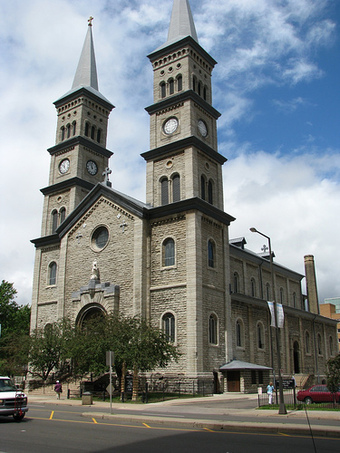
Assumption Catholic Church
The oldest Catholic Church in St. Paul.
14.8.3: Judaism
Judaism is the religion, philosophy, and way of life of the Jewish people.
Learning Objective
Discuss the similarities and differences between Judaism and other religions, such as Christianity and Islam, and identify characteristics of the American Jewish population
Key Points
- The Jewish community in the United States is composed predominantly of Ashkenazi Jews who emigrated from Central and Eastern Europe, and their U.S.-born descendants.
- Jewish ethnic divisions are also represented, including Sephardi Jews, Mizrahi Jews, and a number of converts.
- American Jews are more likely to be atheist or agnostic than most Americans, especially so compared with Protestants or Catholics.
- The Holocaust was the genocide of approximately six million European Jews during World War II.
Key Terms
- agnostic
-
Doubtful or uncertain about the existence or demonstrability of God or other deity.
- Sephardi
-
a Jew of Iberian ancestry, whose native language was Ladino
Example
- Released in the 2006, the American Jewish Yearbook population survey estimates the number of American Jews at 6.4 million, or approximately 2.1% of the total population. This figure is significantly higher than the previous large-scale survey estimate, conducted by the 2000–2001 National Jewish Population estimates, which estimated 5.2 million Jews.
Judaism is the religion, philosophy, and way of life of the Jewish people. It is a monotheistic religion originating in the Hebrew Bible (also known as the Tanakh) and explored in later texts such as the Talmud. Judaism is considered by religious Jews to be the expression of the covenantal relationship God established with the Children of Israel. Rabbinic Judaism holds that God revealed his laws and commandments to Moses on Mount Sinai in the form of both the Written and Oral Torah. The sacred texts of Judaism tends to overlap with many of the stories from Christianity and Islam. The Tanakh consists of the same books as the Christian Old Testament, with minor changes in the order of stories.
Judaism in the United States
American Jews, also known as Jewish Americans, are American citizens of the Jewish faith or Jewish ethnicity. The Jewish community in the United States is composed predominantly of Ashkenazi Jews who emigrated from Central and Eastern Europe, and their U.S.-born descendants. Minorities from all Jewish ethnic divisions are also represented, including Sephardi Jews, Mizrahi Jews, and a number of converts. The American Jewish community manifests a wide range of Jewish cultural traditions, as well as encompassing the full spectrum of Jewish religious observance.
Depending on religious definitions and varying population data, the United States is home to the largest or second largest (after Israel) Jewish community in the world. The population of American adherents of Judaism was estimated to be approximately 5,128,000 or 1.7% of the total population in 2007 (301,621,000); including those who identify themselves culturally as Jewish (but not necessarily religiously), this population was estimated at 6,489,000 (2.2%) as of 2008. As a contrast, Israel’s Central Bureau of Statistics estimated the Israeli Jewish population was 5,664,000 in 2009 (75.4% of the total population).
Jews have been present in what is today the United States of America as early as the 17th century. Large scale Jewish immigration, however, did not begin until the nineteenth century, when, by mid-century, many secular Ashkenazi Jews from Germany arrived in the United States, primarily becoming merchants and shop-owners. There were approximately 250,000 Jews in the United States by 1880, many of them being the educated, and largely secular, German Jews, although a minority population of the older Sephardic Jewish families remained influential.
Jewish immigration to the United States increased dramatically in the early 1880s, as a result of persecution and economic difficulties in parts of Eastern Europe. Most of these new immigrants also were Yiddish-speaking Ashkenazi Jews, though most came from the poor rural populations of the Russian Empire and the Pale of Settlement, located in modern-day Poland, Lithuania, Belarus, Ukraine and Moldova. During the same period, a great number of Ashkenazi Jews arrived also from Galicia, at that time the most impoverished region of Austro-Hungarian Empire with heavy Jewish urban population, driven out mainly by economic reasons. Most settled in the New York metropolitan area, establishing what became one of the world’s major concentrations of Jewish population.
American Jews are more likely to be atheist or agnostic than most Americans, especially so compared with Protestants or Catholics. A 2003 poll found that while 79% of Americans believe in God, only 48% of American Jews do, compared with 79% and 90% for Catholics and Protestants respectively. While 66% of Americans said they were “absolutely certain” of God’s existence, 24% of American Jews said the same. And though 9 percent of Americans believe there is no God (8% Catholic and 4% Protestant), 19 percent of American Jews believe God does not exist.
Though Jewish views on evolution are varied, most schools of Jewish thought have reconciled Judaism with evolution. A 2009 Harris Poll showed American Jews as the religious group most accepting of evolution, with 80% believing in evolution, compared to 51% for Catholics, 32% for Protestants, and 16% of Born-again Christians. They were also less likely to believe in supernatural phenomena such as miracles, angels, or heaven.
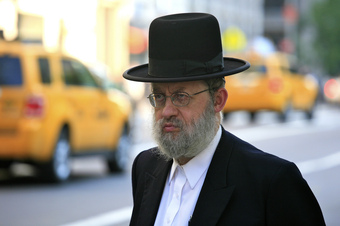
A Haredi Jew in New York CIty
The Haredi Jews are the most conservative of Orthodox Jews.
14.8.4: Islam
The American Muslim population is a racially diverse group that has been present in the U.S. since before the Civil War.
Learning Objective
Discuss the history and characteristics of the American Muslim population in the U.S., including periods of arrival and religious affiliations
Key Points
- Many of the slaves brought to colonial America from Africa were Muslims. By 1800, some 500,000 Africans arrived in what became the United States. Historians estimate that between 15 to 30 percent of all enslaved African men, and less than 15 percent of the enslaved African women, were Muslims.
- American Muslims come from various backgrounds, and are one of the most racially diverse religious groups in the United States according to a 2009 Gallup poll. Native-born American Muslims are mainly African Americans who make up about a quarter of the total Muslim population.
- Unlike many Muslims in Europe, American Muslims do not tend to feel marginalized or isolated from political participation. Several organizations were formed by the American Muslim community to serve as ‘critical consultants’ on U.S. policy regarding Iraq and Afghanistan.
- Mosques are places of worship for Islamic religions.
- In the United States there exist a number of different traditions. As in the rest of the world, the Sunni Muslims are in the majority. Shia Muslims, especially those in the Iranian immigrant community, are also active in community affairs.
Key Terms
- Nation of Islam
-
A religious and political organization with the declared aim of “resurrecting” the spiritual, mental, social and economic condition of the black people of America and the world.
- mosque
-
A place of worship for Muslims, corresponding to a church or synagogue in other religions, often having at least one minaret; a masjid.
- Muslim
-
A person who is a follower and believer of the Islamic faith.
Example
- Muslims comprise less than two percent of the American population, but they account for approximately one quarter of the religious discrimination. These claims were filed with the Equal Employment Opportunity Commission during 2009.
Islam in the United States
Once very small, the Muslim population of the U.S. increased greatly in the 20th century, with much of the growth driven by rising immigration and conversion, and a comparatively high birth rate. In 2005, more people from Islamic countries became legal permanent United States residents than in any year in the previous two decades (nearly 96,000). In 2009, more than 115,000 Muslims became legal residents of the United States.
American Muslims come from various backgrounds, and are one of the most racially diverse religious groups in the United States according to a 2009 Gallup poll. Immigrant communities of Arab and South Asian descent make up the majority of American Muslims. Native-born American Muslims are mainly African-Americans who make up about a quarter of the total Muslim population. Many of these have converted to Islam during the last seventy years. Conversion to Islam in prison and in large urban areas has also contributed to its growth over the years.
Slavery and Islam
Many of the slaves brought to colonial America from Africa were Muslims. By 1800, some 500,000 Africans arrived in what became the United States. Historians estimate that between 15 to 30 percent of all enslaved African men, and less than 15 percent of the enslaved African women, were Muslims. These enslaved Muslims stood out from their compatriots because of their “resistance, determination, and education”.
Modern Migration
Small-scale migration to the U.S. by Muslims began in 1840, with the arrival of Yemenis and Turks, and lasted until World War I. Most of the immigrants, coming from Arab areas of the Ottoman Empire, came with the purpose of making money and returning to their homeland. However, the economic hardships of 19th century America prevented them from prospering. As a result, the immigrants settled in the United States permanently. These immigrants settled primarily in Dearborn, Michigan; Quincy, Massachusetts; and Ross, North Dakota. Ross, North Dakota is the site of the first documented mosque and Muslim cemetery, but it was abandoned and later torn down in the mid-1970s. A new mosque was built in its place in 2005.
Demographics
According to the U.S. Department of State, the largest ethnic groups of American Muslims are those of South Asian, Arab and African-American descent.
There are 1,209 mosques in the United States and the nation’s largest mosque, the Islamic Center of America, is in Dearborn, Michigan. It caters mainly to the Shi’a Muslim congregation; however, all Muslims may attend this mosque. It was rebuilt in 2005 to accommodate over 3,000 people for the increasing Muslim population in the region. Approximately half (50%) of the religious affiliations of Muslims is Sunni, 16% Shia, 22% non-affiliated and, 16% other/non-response. Muslims of Arab decent are mostly Sunni (56%) with minorities who are Shi’a (19%). Bangladeshis (90%), Pakistanis (72%), and Indians (82%) are mainly Sunni, while Iranians are mainly Shi’a (91%). Of African-American Muslims, 48% are Sunni, 34% are unaffiliated (mostly part of the Community of W. Deen Mohammed), 16% other (mostly Nation of Islam and Ahmadiyya) and 2% Shi’a.
Since the arrival of South Asian and Arab communities during the 1990s, there have been divisions with African Americans due to racial and cultural differences. However, since 9/11, the two groups joined together when the immigrant communities looked towards the African Americans for advice on civil rights.
Comparison to Other Religions
Islam has similarities with other American-practiced religions, including Protestantism and Christianity. Some of the similarities include a belief in a single God, who is supreme to all other gods. Many of the religious stories told in these religions share a similar thread, although certain details or the order of the story may be slightly different, depending upon the religious text it comes from. Also, these religious all believe in an afterlife, promoting good behaviors and adherence to religious doctrine in order to ensure entrance to this revered place.
American Islamic Culture
Muslims in the United States have increasingly contributed to American culture; there are various Muslim comedy groups, rap groups, Scout troops and magazines.
Some Muslims in the U.S. are also adherents of certain global movements within Islam such as the Salafi, the Muslim Brotherhood, the Gulen Movement, and the Tablighi Jamaat.
Muslim Integration into American Society
Unlike many Muslims in Europe, American Muslims do not tend to feel marginalized or isolated from political participation. Several organizations were formed by the American Muslim community to serve as ‘critical consultants’ on U.S. policy regarding Iraq and Afghanistan. Other groups have worked with law enforcement agencies to point out Muslims within the United States that they suspect of fostering ‘intolerant attitudes’. Still others have worked to invite interfaith dialogue to improve relations between Muslim and non-Muslim Americans.
A Pew report released in 2009 noted that nearly six-in-ten American adults see Muslims as being subject to discrimination, more than Mormons, Atheists, or Jews. While Muslims comprise less than two percent of the American population, they accounted for approximately one quarter of the religious discrimination claims filed with the Equal Employment Opportunity Commission during 2009.

Masjid Malcolm Shabazz Mosque
Mosque in New York City.
14.8.5: Social Correlates of Religion
There are correlations between the degree of religious belief in society and social factors like mortality rates, wealth and happiness.
Learning Objective
Identify what might be a tension in understanding highly religious nations and highly religious people
Key Points
- Some sociological research indicates that highly religious, developed nations have higher rates of homicide, mortality, sexually transmitted infections, teen pregnancies, and abortions, whereas so-called “Godless” developed nations have significantly lower mortality rates.
- A BBC research study on religion in Europe suggests that religious belief has declined over the years.
- A study by sociologist Lisa A. Keister found that adherents of Judaism and Episcopalianism attained the most wealth; believers of Catholicism and mainline Protestants were in the middle; and conservative Protestants accumulated the least wealth.
- Surveys by Gallup, the National Opinion Research Center and the Pew Organization conclude that spiritually committed people are twice as likely to report being “very happy” than the least religiously committed people.
Key Term
- National Opinion Research Center
-
NORC at the University of Chicago, established in 1941 as the National Opinion Research Center, is one of the largest and most highly respected social research organizations in the United States.
Example
- The correlation between higher rates of happiness and religious affiliation has been demonstrated by several studies. For instance, of 498 studies published in peer-reviewed journals, a large majority showed a positive correlation between religious commitment and higher levels of perceived well-being and self-esteem and lower levels of hypertension, depression and clinical delinquency.
Religion’s Impact on Societies
Research indicates that in prosperous democracies, higher rates of belief in and worship of a creator correlate with higher rates of homicide, juvenile and early adult mortality, STD infection rates, teen pregnancy, and abortion. As author Stephen Law paraphrases in his book “War For the Children’s Mind,” “The most theistic prosperous democracy, the U.S., is exceptional, but not in the manner Franklin predicted. The United States is almost always the most dysfunctional of the developed democracies, sometimes spectacularly so…The view of the U.S. as a ‘shining city on the hill’ to the rest of the world is falsified when it comes to basic measures of societal health. ” In other words, the U.S., a theistic and prosperous nation, demonstrates that religiosity doesn’t necessarily correlate with creating cultures that reduce death.
The study also notes that more secular, pro-evolution societies come closer to “cultures of life. ” Although these countries are far from perfect, they have, for example, low rates of lethal crime. The authors conclude that the reasonable success of non-religious democracies like Japan, France and Scandinavia has refuted the idea that Godless societies suffer disaster. They add, “Contradicting these conclusions requires demonstrating a positive link between theism and societal conditions in the first world with a similarly large body of data – a doubtful possibility in view of the observable trends. “
BBC news reported on a study that attempted to use mathematical modeling to predict future religious orientations of populations. The study suggests that religion is headed towards “extinction” in various nations where it has been on the decline: Australia, Austria, Canada, the Czech Republic, Finland, Ireland, the Netherlands, New Zealand and Switzerland. The model considers not only the changing number of people with certain beliefs, but also attempts to assign utility values of a belief as per each nation .
Wealth and Organized Religion
A U.S. study conducted by sociology researcher Lisa A. Keister found that Jewish and Episcopalian adherents attained the most wealth. Believers of Catholicism and mainline Protestants were in the middle, and conservative Protestants accumulated the least wealth. In general, people who attend religious services achieved more wealth than those who do not (taking into account variations of education and other factors). The researcher suggests that wealth accumulation is shaped by family processes.
The median net worth of people believing in the Jewish religion is calculated at $150,890, while the median net worth of conservative Protestants (including Baptists, Jehovah’s Witnesses, Seventh-day Adventists, and Christian Scientists) was found at $26,200. The overall median in the dataset was $48,200.
Another study by Keister found that “religion affects wealth indirectly through educational attainment, fertility and female labor force participation. ” The study also found evidence of direct effects of religion on wealth attainment.
Religion and Happiness
Religion and happiness have been studied by a number of researchers. The science of positive psychology has identified many components of happiness, and religion seems adapted to satisfy many of them. Some research suggests that both non-religious and religious meaning systems can be quite effective when it comes to managing death anxiety, and that the latter have a few additional advantages.
Surveys by Gallup, the National Opinion Research Center and the Pew Organization conclude that spiritually committed people are twice as likely to report being “very happy” than the least religiously committed people. An analysis of over 200 social studies contends that “high religiousness predicts a lower risk of depression and drug abuse and fewer suicide attempts, and more reports of satisfaction with sex life and a sense of well-being. ” A review of 498 studies published in peer-reviewed journals concluded that a large majority of them showed a positive correlation between religious commitment and higher levels of perceived well-being and self-esteem and lower levels of hypertension, depression, and clinical delinquency.
A meta-analysis of 34 recent studies published between 1990 and 2001 found that religiosity has a salutary relationship with psychological adjustment related to less psychological distress, more life satisfaction and better self-actualization. Finally, a recent systematic review of 850 research papers concluded that “the majority of well-conducted studies found that higher levels of religious involvement are positively associated with indicators of psychological well-being (life satisfaction, happiness, positive affect and higher morale) and less with depression, suicidal thoughts and behavior, and drug/alcohol use/abuse. “
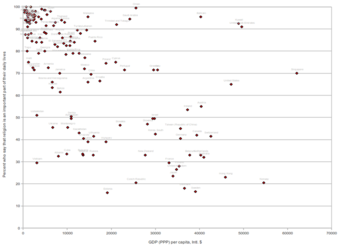
Religion versus GDP per Capita
Wealth and religion
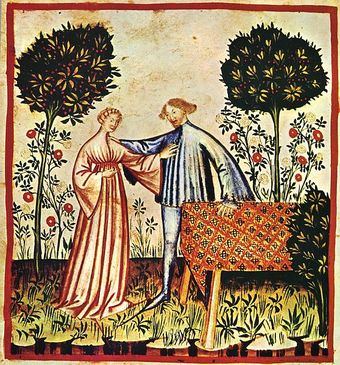
Religion and happiness
The science of positive psychology has identified many components of happiness, and religion seems adapted to satisfy many of them. Some research suggests that both non-religious and religious meaning systems can be quite effective when it comes to managing death anxiety, and that the latter have a few additional advantages.
14.8.6: Affiliation
The main religious preferences in the Unites States include (in order): Christianity, unaffiliate, Judaism, Islam, Buddhism, and Hinduism.
Learning Objective
Diagram religious and non-religious beliefs in the U.S. according to popularity
Key Points
- The U.S. is a very religiously diverse country. People who identify as Christians in the U.S. encompass the majority of the population, although there are a wide variety of denominations that have developed since the introduction of Christianity in colonial times.
- Unaffiliated beliefs, including atheism and agnosticism, are the second largest group. Judaism is the third largest group, and Islam, Buddhism, Hinduism, and other beliefs are less than one percent of the population.
- According to recent surveys, 83% of Americans identify with a religious denomination. A majority of Americans report that religion plays a “very important” role in their lives, a proportion unique among developed nations.
- The First Amendment guarantees the free exercise of religion while also preventing the government from establishing a state religion.
Key Terms
- agnosticism
-
The view that the existence of God or of all deities is unknown, unknowable, unproven, or unprovable.
- denomination
-
A class, or society of individuals, called by the same name; a sect; as, a denomination of Christians.
Example
- From the early colonial days, when some English and German settlers came in search of religious freedom, America has been profoundly influenced by religion. That influence continues in American culture, social life, and politics.
Religion in the United States is characterized by both a wide diversity of religious beliefs and practices and by a high adherence level. According to recent surveys, 83% of Americans identify with a religious denomination, 40% state that they attend services nearly every week or more, and 58% say that they pray at least weekly. A majority of Americans report that religion plays a “very important” role in their lives, a proportion unique among developed nations. Many faiths have flourished in the United States, including both later imports spanning the country’s multicultural immigrant heritage, as well as those founded within the country; these have led the United States to become one of the most religiously diverse countries in the world.
The majority of Americans (76% to 80%) identify themselves as Protestants or Catholics, accounting for 51% and 25% of the population respectively. Non-Christian religions (including Judaism, Islam, Buddhism, Hinduism, etc.), collectively make up about 5% of the adult population. Another 15% of the adult population claims no religious affiliation. When asked, about 5.2% said they did not know or refused to reply. According to the American Religious Identification Survey, religious belief varies considerably by region. The lowest rate is in the West with 59% reporting a belief in God, and the highest rate in the South (the “Bible Belt”) at 86%.
Despite a high level of religious adherence, only 9% of Americans in a 2008 poll said religion was the most important thing in their life, compared with 45% who said family was paramount in their life and 17% who said money and career was paramount. Mark Chaves, a Duke University professor of sociology, religion, and divinity, found that 92% of Americans believed in God in 2008, but that they have significantly less confidence in their religious leaders than they did a generation ago.
From the early colonial days, when some English and German settlers came in search of religious freedom, America has been profoundly influenced by religion. That influence continues in American culture, social life, and politics. Several of the original 13 colonies were established by settlers who wished to practice their own religion within a community of like-minded people: the Massachusetts Bay Colony was established by English Puritans (Congregationalists), Pennsylvania by British Quakers, Maryland by English Catholics, and Virginia by English Anglicans.
The U.S. Census does not ask about religion. Various groups have conducted surveys to determine approximate percentages of those affiliated with each religious group. Some surveys ask people to self-identify, while others calculate church memberships. Christianity comprises 59.9% to 78.4% of affiliation, unaffiliated, including atheist or agnostic are 15.0% to 37.3%, Judaism are 1.2 % to 2.2 %, Islam about .6%, Buddhism 0.5 % to 0.9%, Hinduism 0.4% and other religions 1.2% to 1.4% in the United States.
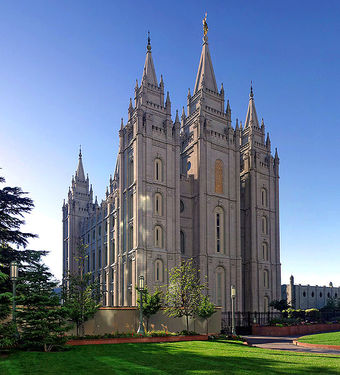
Salt Lake Temple, Utah
It is the sixth temple completed by the church, requiring 40 years to complete, and the fourth operating temple built since the Mormon exodus from Nauvoo, Illinois.
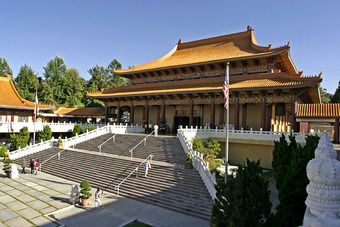
Lightmatter Hsi Lai Temple in Los Angeles, California
The Hsi Lai Temple is the largest Buddhist temple in the United States.
